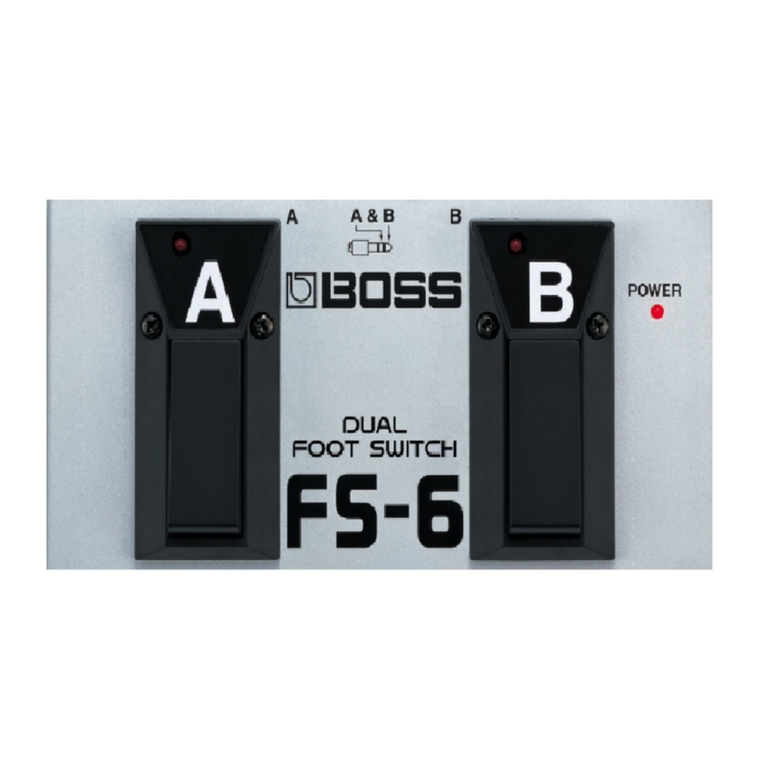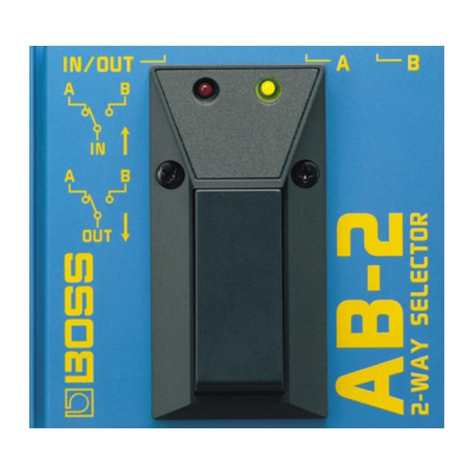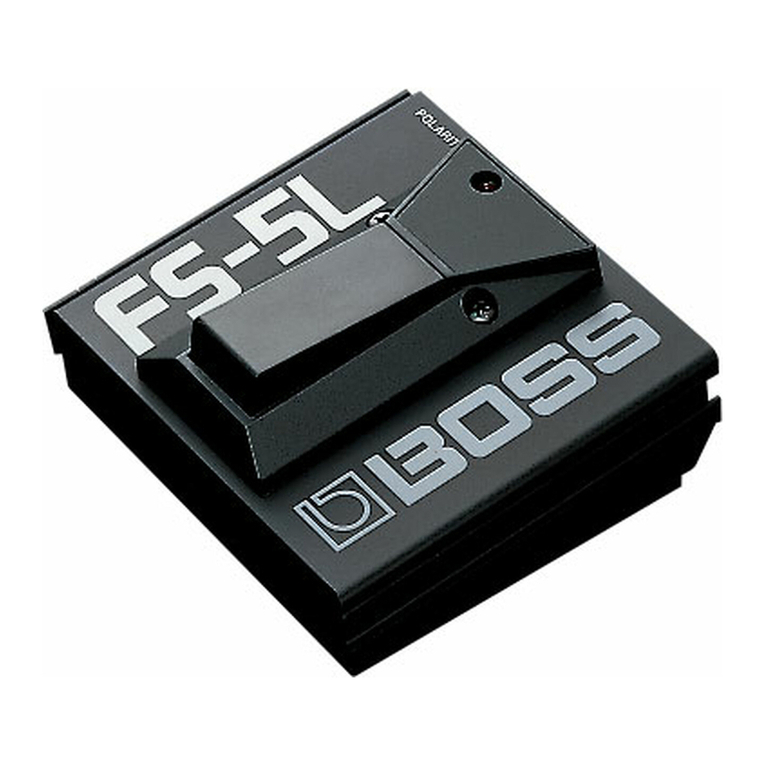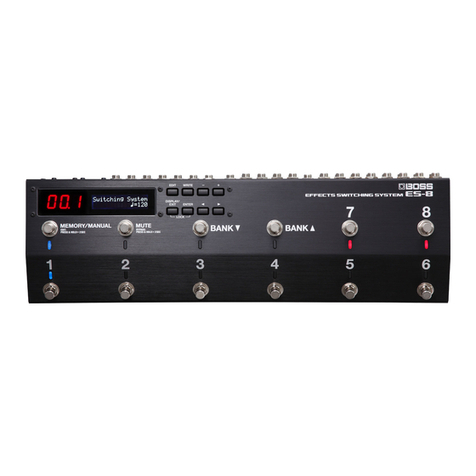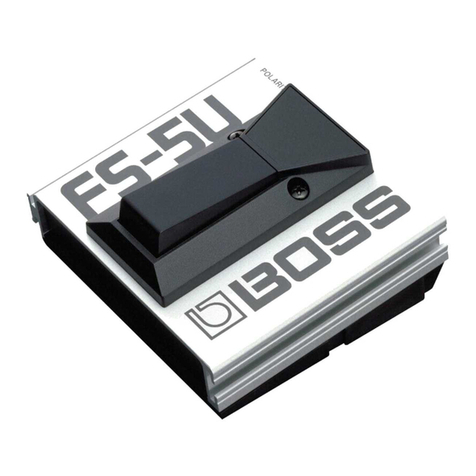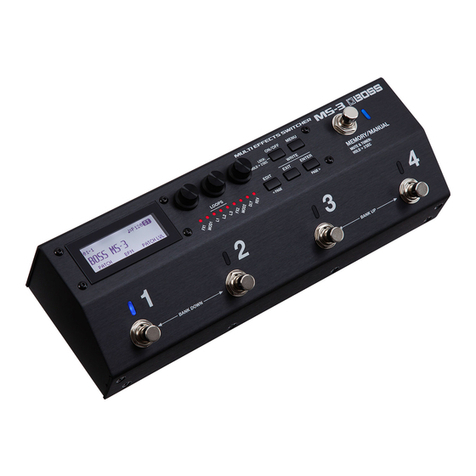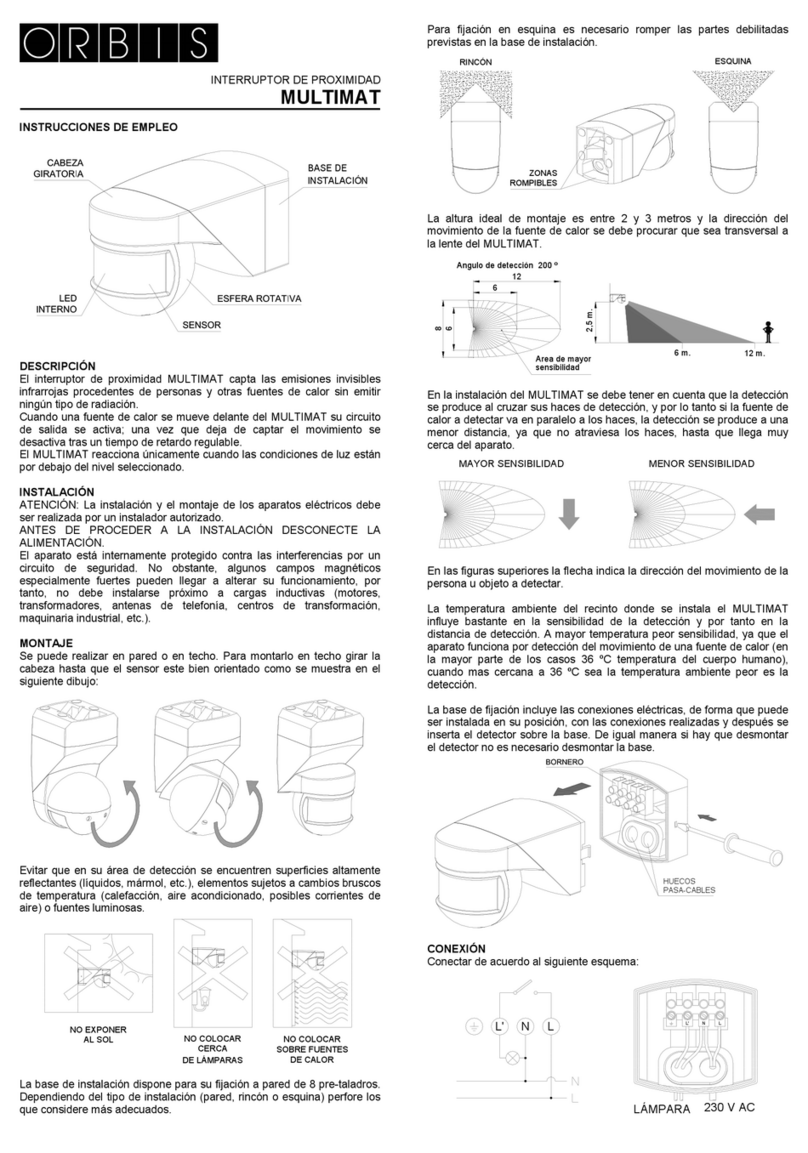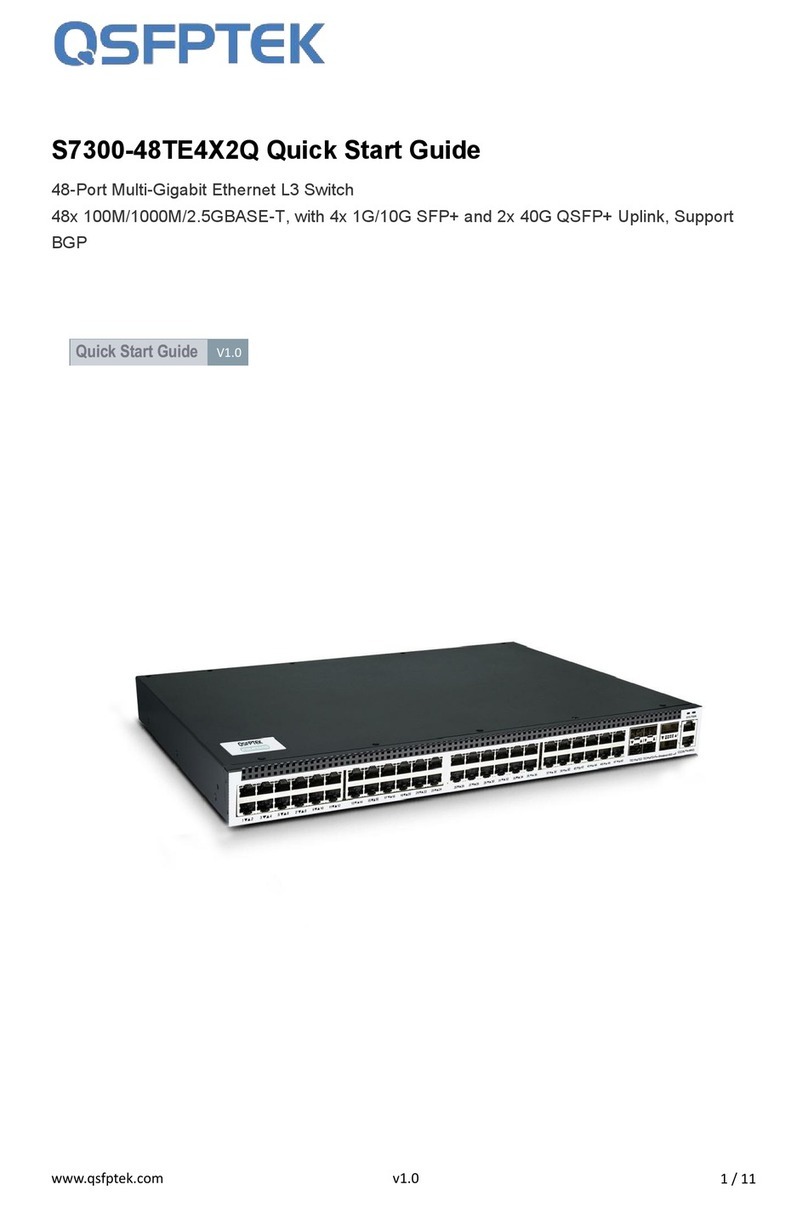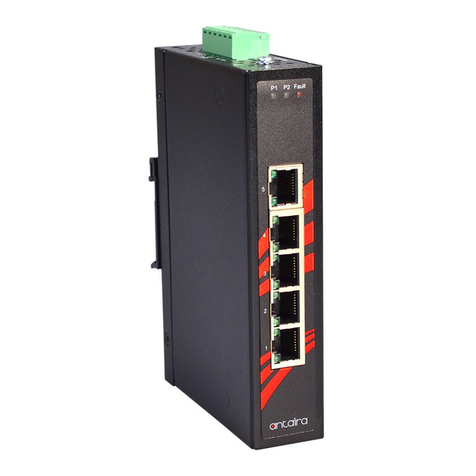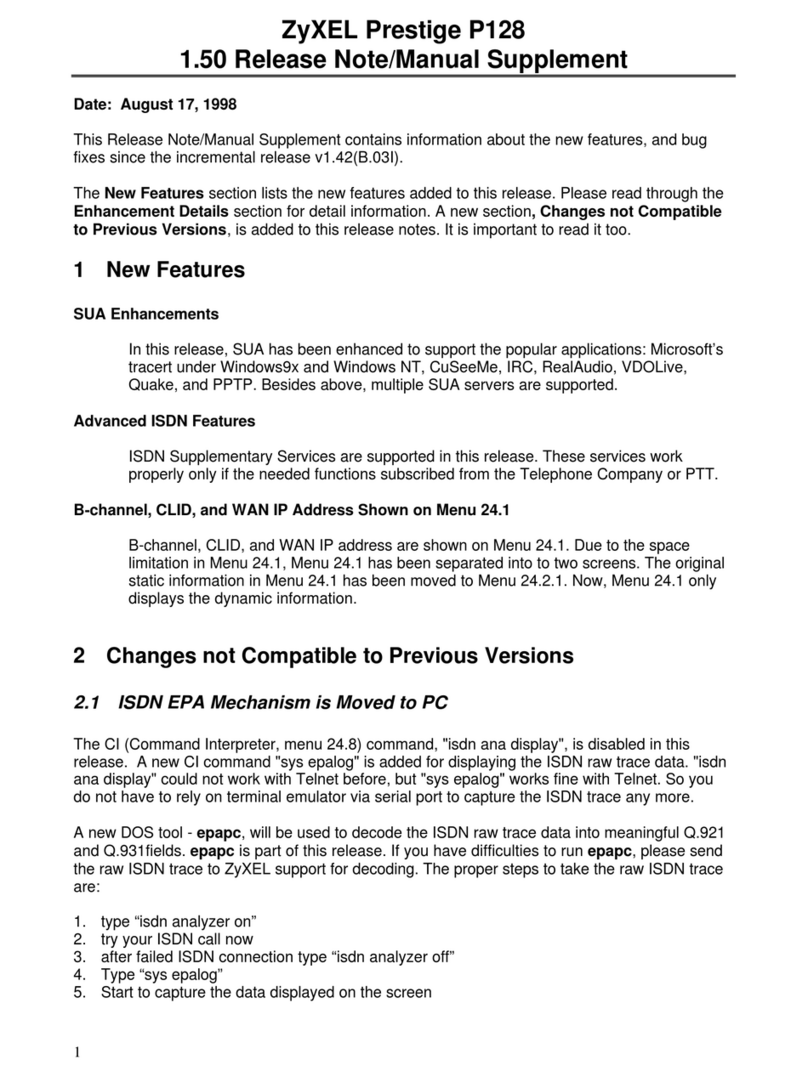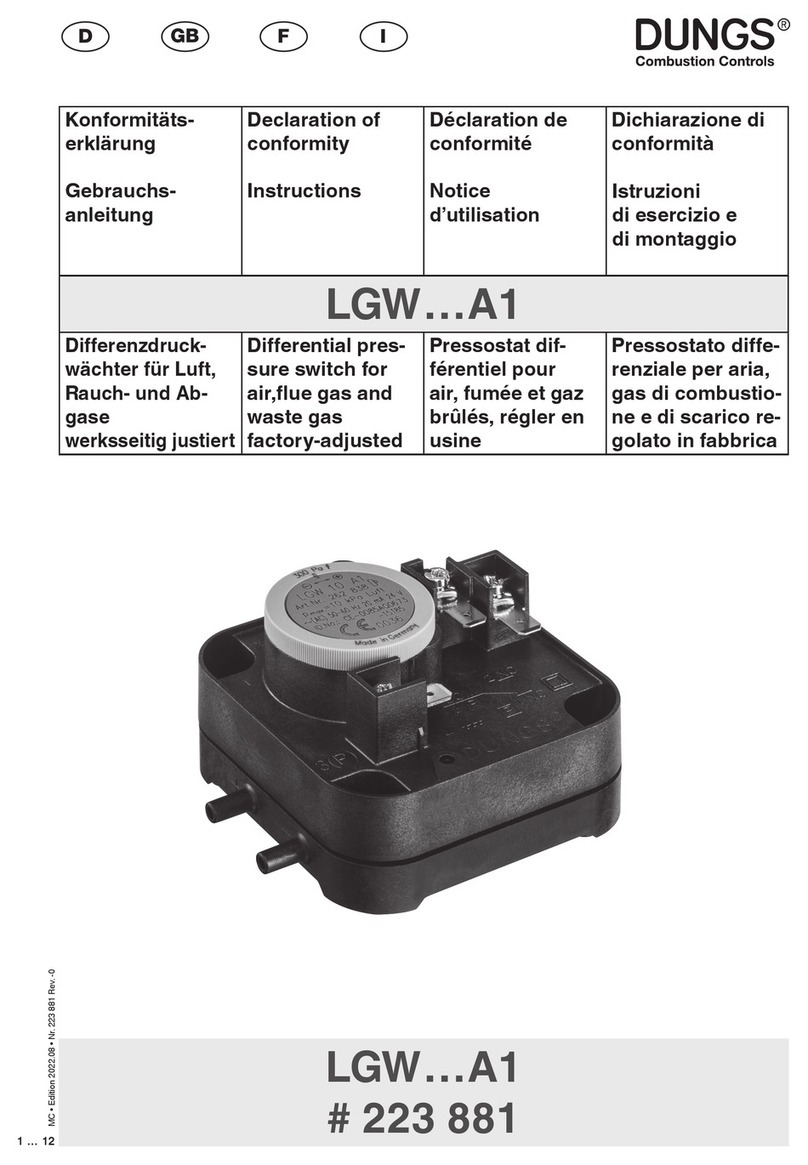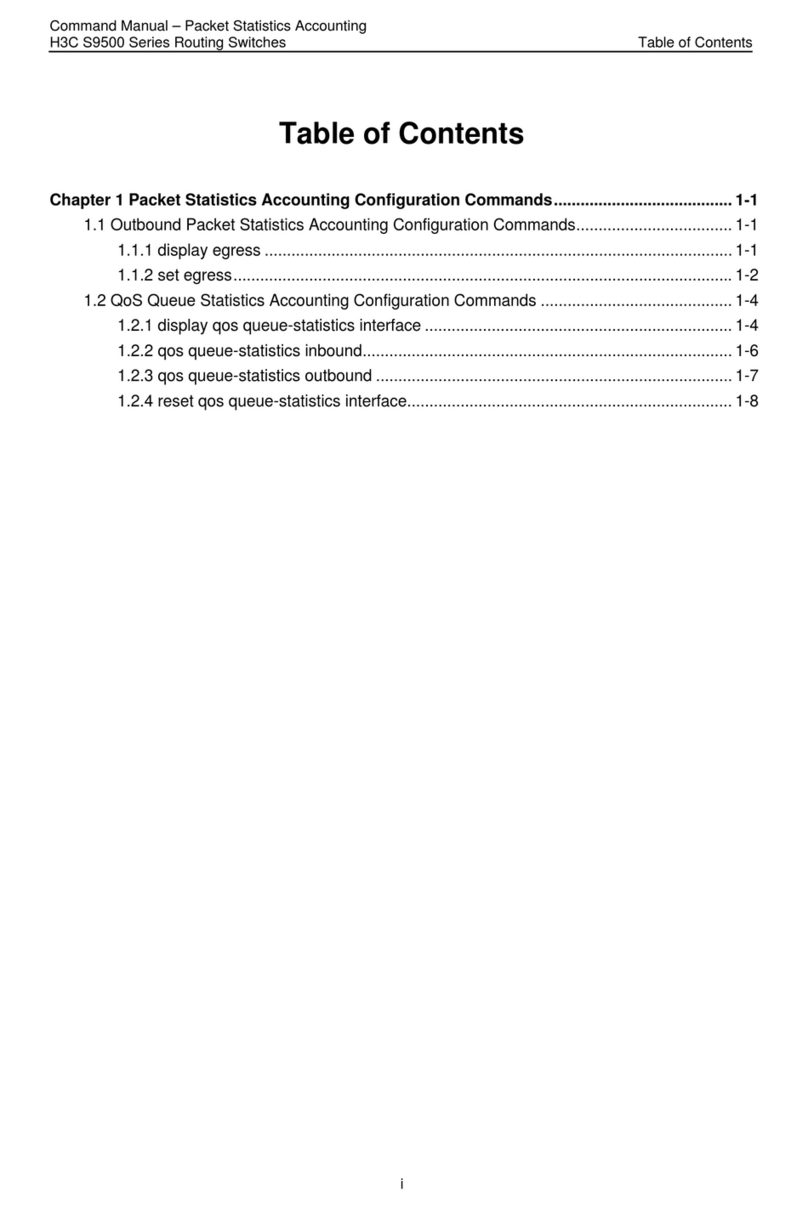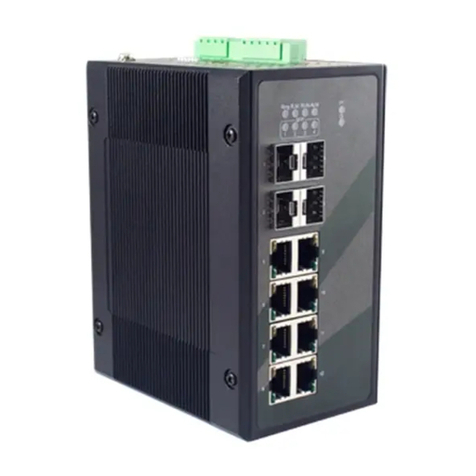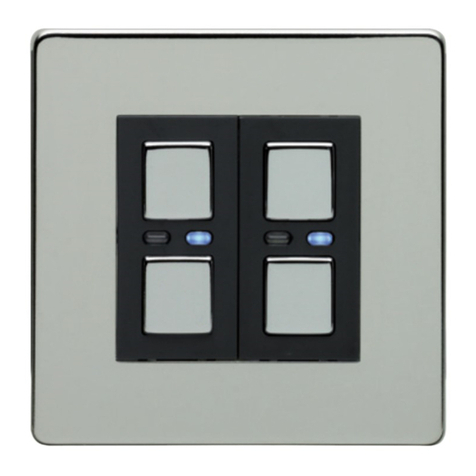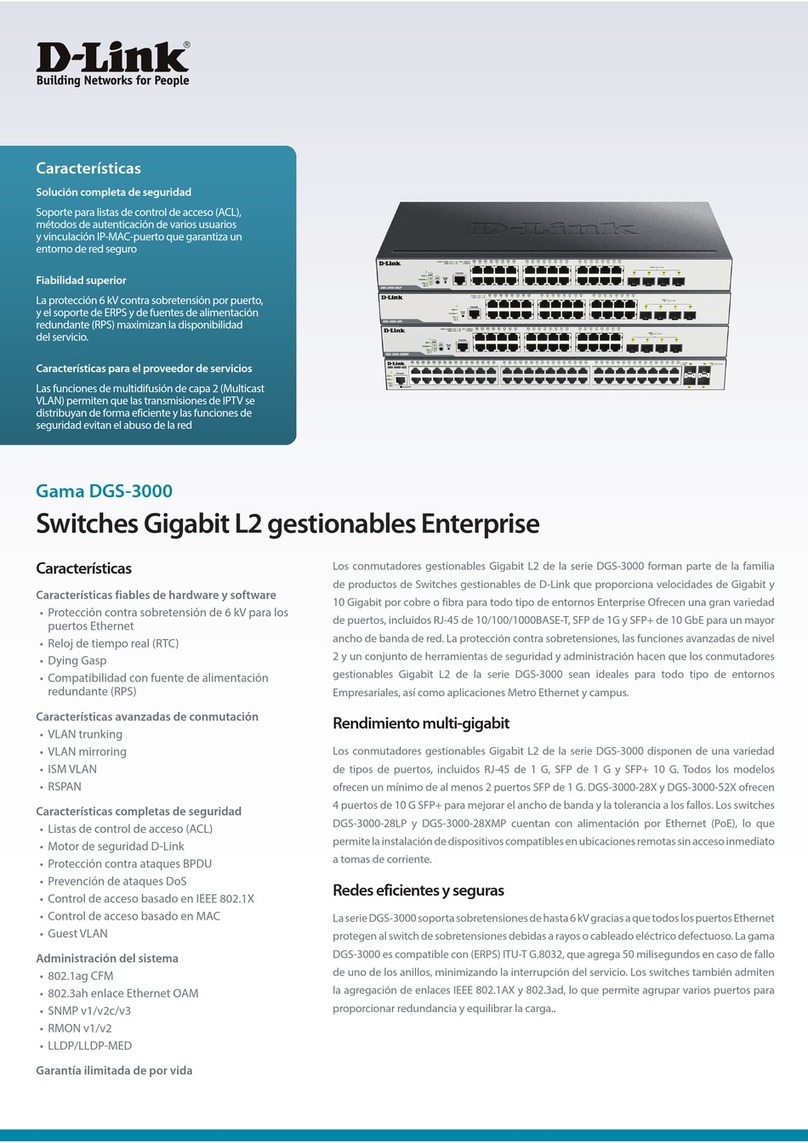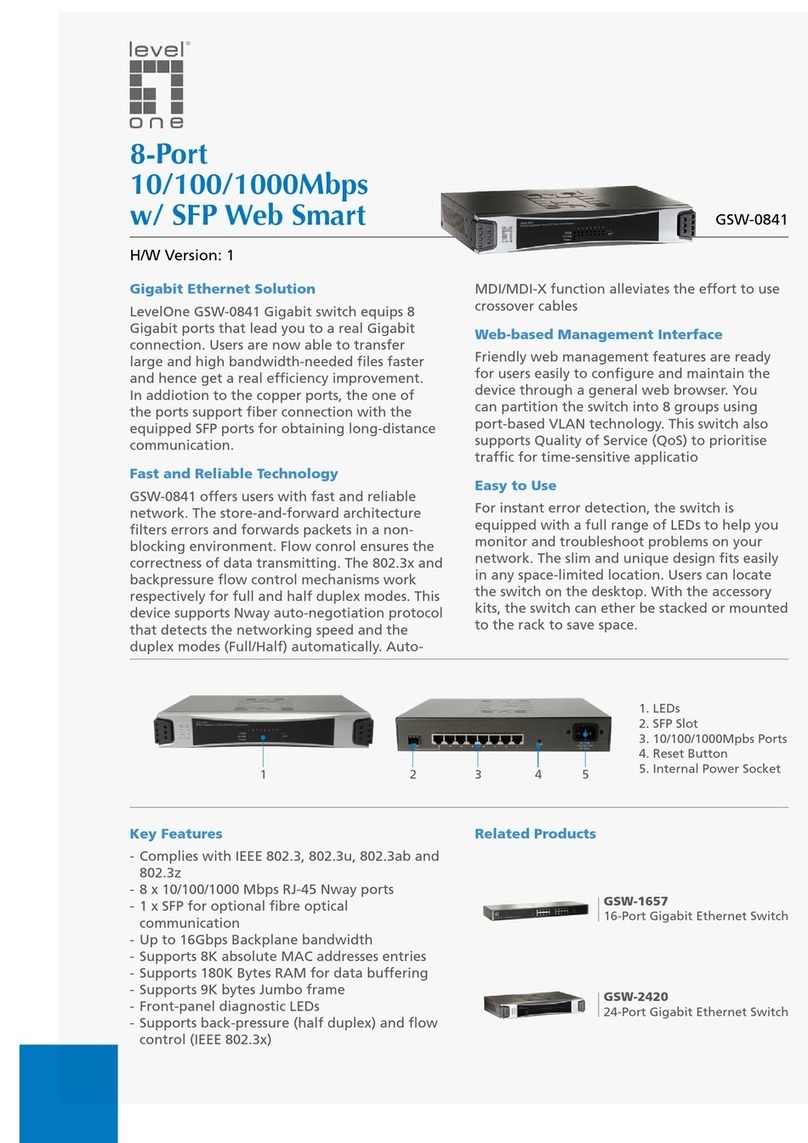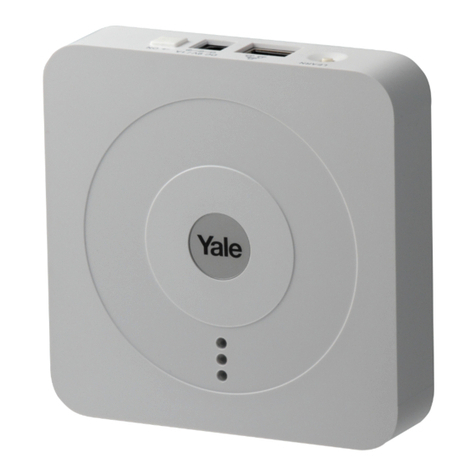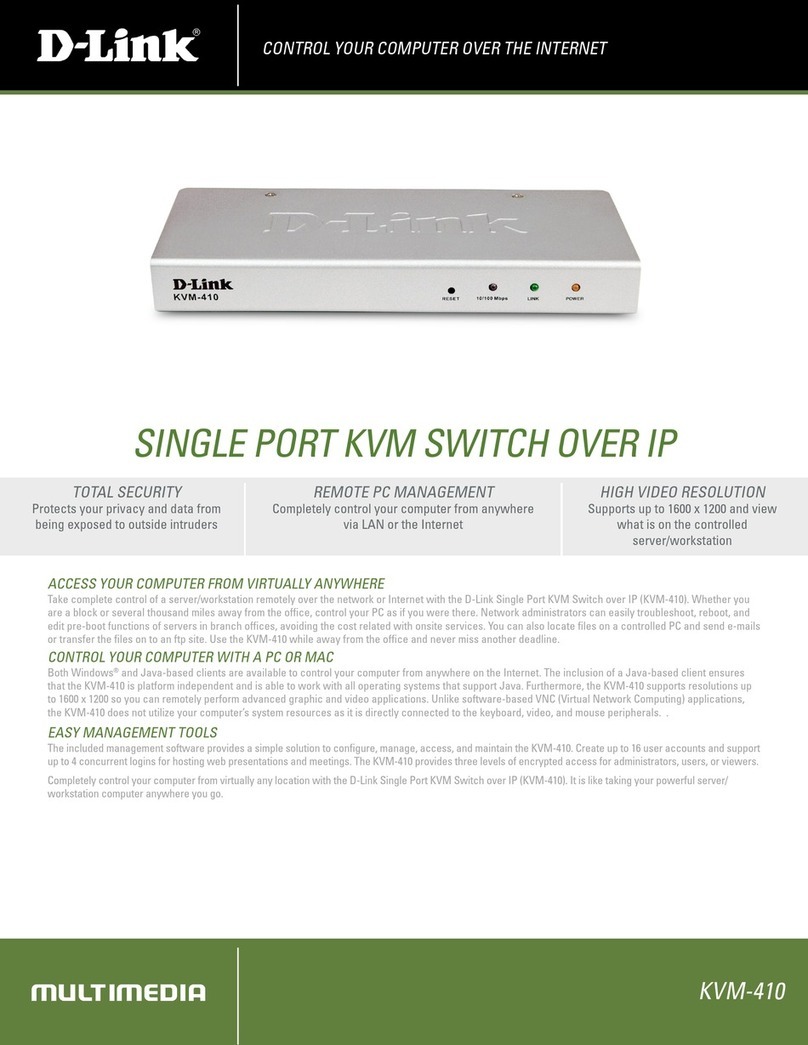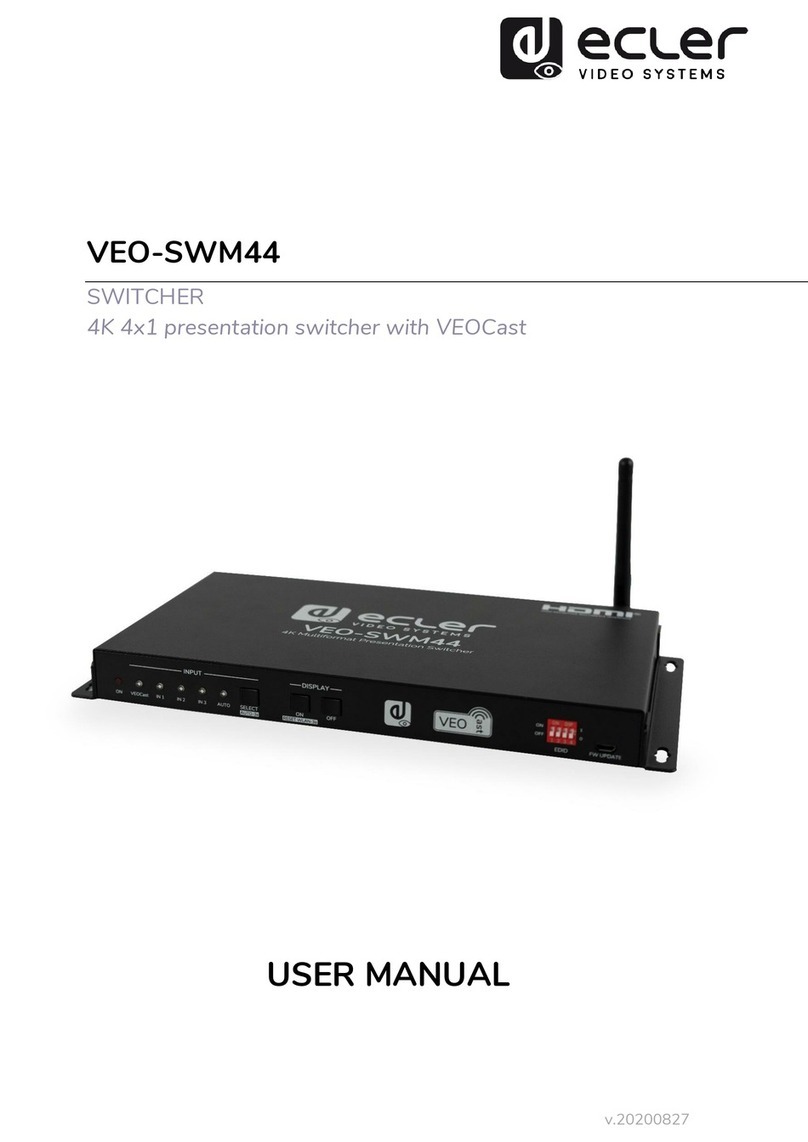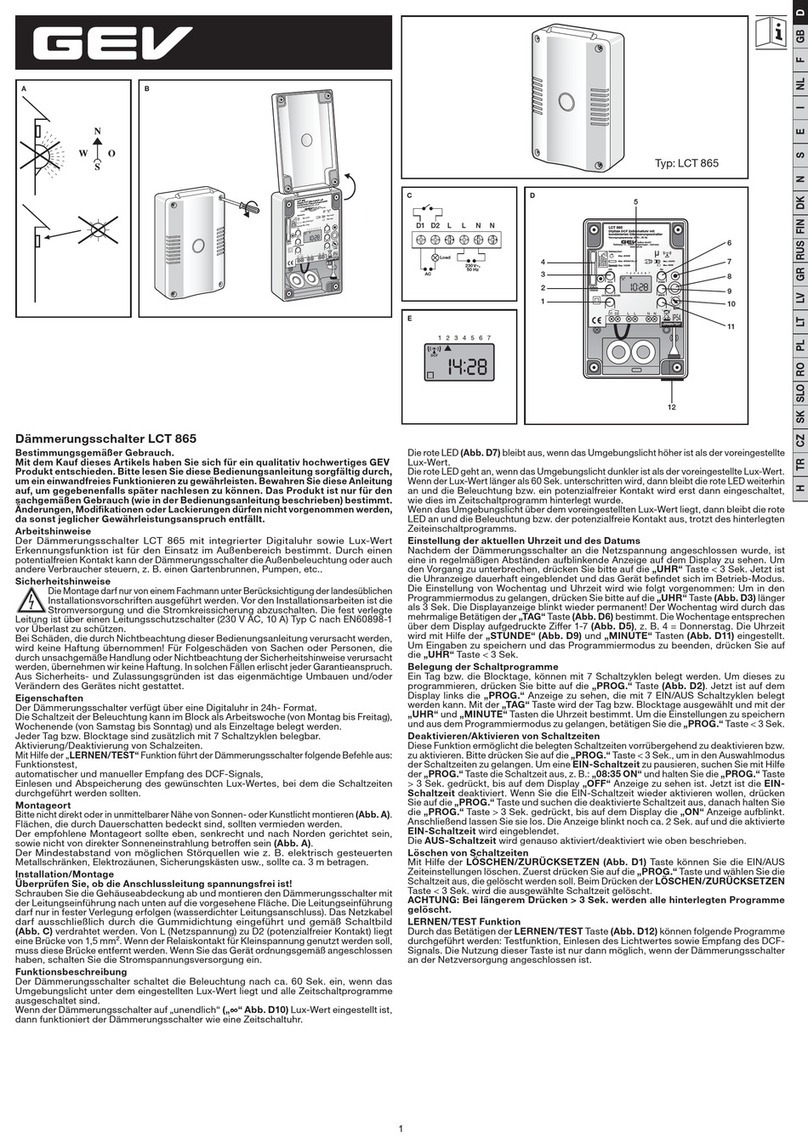BOSSCO MS-3 User manual

Parameter Guide
MEMO
5This eect sound is mono.
5This eect sound is output with two channels.
5These eects take a mono input and output it on two channels.
* Company names and product names appearing in this document are registered trademarks or trademarks of
their respective owners.
Copyright © 2017 ROLAND CORPORATION

2
Contents
Basic Operation. . . . . . . . . . . . . . . . . . . . . . . . . . . . . . . . . . . . . . . . . . 3
Basic Procedure for Eect Editing . . . . . . . . . . . . . . . . . . . . . . . 3
Changing the Eect Connection Order . . . . . . . . . . . . 4
Changing the CTL/ASSIGN/MIDI Settings . . . . . . . . . . 4
Saving a Patch (Write). . . . . . . . . . . . . . . . . . . . . . . . . . . . . . . . . . 4
Exchanging Patches . . . . . . . . . . . . . . . . . . . . . . . . . . . . . . 5
Initializing a Patch. . . . . . . . . . . . . . . . . . . . . . . . . . . . . . . . 5
EFFECT . . . . . . . . . . . . . . . . . . . . . . . . . . . . . . . . . . . . . . . . . . . . . . . . . . 6
FX1/FX2 . . . . . . . . . . . . . . . . . . . . . . . . . . . . . . . . . . . . . . . . . . . . . . 6
COMPRESSOR. . . . . . . . . . . . . . . . . . . . . . . . . . . . . . . . . . . . 7
LIMITER . . . . . . . . . . . . . . . . . . . . . . . . . . . . . . . . . . . . . . . . . 7
T. WAH . . . . . . . . . . . . . . . . . . . . . . . . . . . . . . . . . . . . . . . . . . 8
BASS T. WAH . . . . . . . . . . . . . . . . . . . . . . . . . . . . . . . . . . . . . 8
AUTO WAH . . . . . . . . . . . . . . . . . . . . . . . . . . . . . . . . . . . . . . 8
WAH . . . . . . . . . . . . . . . . . . . . . . . . . . . . . . . . . . . . . . . . . . . . 8
BASS WAH . . . . . . . . . . . . . . . . . . . . . . . . . . . . . . . . . . . . . . . 9
OD/DS . . . . . . . . . . . . . . . . . . . . . . . . . . . . . . . . . . . . . . . . . . 9
BASS OD/DS . . . . . . . . . . . . . . . . . . . . . . . . . . . . . . . . . . . . . 10
GRAPHIC EQ . . . . . . . . . . . . . . . . . . . . . . . . . . . . . . . . . . . . . 10
PARAMETRIC EQ . . . . . . . . . . . . . . . . . . . . . . . . . . . . . . . . . 10
AC. GUITAR SIMULATOR . . . . . . . . . . . . . . . . . . . . . . . . . . 10
DEFRETTER . . . . . . . . . . . . . . . . . . . . . . . . . . . . . . . . . . . . . . 10
SITAR SIM. . . . . . . . . . . . . . . . . . . . . . . . . . . . . . . . . . . . . . . . 11
SLOW GEAR. . . . . . . . . . . . . . . . . . . . . . . . . . . . . . . . . . . . . . 11
BASS SLOW GEAR . . . . . . . . . . . . . . . . . . . . . . . . . . . . . . . . 11
OCTAVE . . . . . . . . . . . . . . . . . . . . . . . . . . . . . . . . . . . . . . . . . 11
BASS OCTAVE . . . . . . . . . . . . . . . . . . . . . . . . . . . . . . . . . . . . 11
PITCH SHIFTER . . . . . . . . . . . . . . . . . . . . . . . . . . . . . . . . . . . 11
BASS PITCH SHIFTER. . . . . . . . . . . . . . . . . . . . . . . . . . . . . . 12
HARMONIST . . . . . . . . . . . . . . . . . . . . . . . . . . . . . . . . . . . . . 12
BASS HARMONIST. . . . . . . . . . . . . . . . . . . . . . . . . . . . . . . . 13
OVERTONE . . . . . . . . . . . . . . . . . . . . . . . . . . . . . . . . . . . . . . 13
PEDAL BEND. . . . . . . . . . . . . . . . . . . . . . . . . . . . . . . . . . . . . 13
BASS PEDAL BEND . . . . . . . . . . . . . . . . . . . . . . . . . . . . . . . 13
SOUND HOLD. . . . . . . . . . . . . . . . . . . . . . . . . . . . . . . . . . . . 13
S-BEND. . . . . . . . . . . . . . . . . . . . . . . . . . . . . . . . . . . . . . . . . . 13
BASS S-BEND . . . . . . . . . . . . . . . . . . . . . . . . . . . . . . . . . . . . 14
WARP . . . . . . . . . . . . . . . . . . . . . . . . . . . . . . . . . . . . . . . . . . . 14
FEEDBACKER. . . . . . . . . . . . . . . . . . . . . . . . . . . . . . . . . . . . . 14
SUB DELAY . . . . . . . . . . . . . . . . . . . . . . . . . . . . . . . . . . . . . . 14
MOD1/MOD2 . . . . . . . . . . . . . . . . . . . . . . . . . . . . . . . . . . . . . . . . . 15
CHORUS. . . . . . . . . . . . . . . . . . . . . . . . . . . . . . . . . . . . . . . . . 15
2X2 CHORUS. . . . . . . . . . . . . . . . . . . . . . . . . . . . . . . . . . . . . 16
PHASER . . . . . . . . . . . . . . . . . . . . . . . . . . . . . . . . . . . . . . . . . 16
FLANGER . . . . . . . . . . . . . . . . . . . . . . . . . . . . . . . . . . . . . . . . 17
BASS FLANGER. . . . . . . . . . . . . . . . . . . . . . . . . . . . . . . . . . . 17
TREMOLO . . . . . . . . . . . . . . . . . . . . . . . . . . . . . . . . . . . . . . . 17
PAN . . . . . . . . . . . . . . . . . . . . . . . . . . . . . . . . . . . . . . . . . . . . . 17
ROTARY . . . . . . . . . . . . . . . . . . . . . . . . . . . . . . . . . . . . . . . . . 18
UNI-V. . . . . . . . . . . . . . . . . . . . . . . . . . . . . . . . . . . . . . . . . . . . 18
SLICER. . . . . . . . . . . . . . . . . . . . . . . . . . . . . . . . . . . . . . . . . . . 18
VIBRATO. . . . . . . . . . . . . . . . . . . . . . . . . . . . . . . . . . . . . . . . . 18
RING MOD. . . . . . . . . . . . . . . . . . . . . . . . . . . . . . . . . . . . . . . 19
DLY (DELAY). . . . . . . . . . . . . . . . . . . . . . . . . . . . . . . . . . . . . . . . . . . 19
SINGLE . . . . . . . . . . . . . . . . . . . . . . . . . . . . . . . . . . . . . . . . . . 20
PAN . . . . . . . . . . . . . . . . . . . . . . . . . . . . . . . . . . . . . . . . . . . . . 20
STEREO. . . . . . . . . . . . . . . . . . . . . . . . . . . . . . . . . . . . . . . . . . 20
DUAL-S (DUAL-SERIES). . . . . . . . . . . . . . . . . . . . . . . . . . . . 20
DUAL-P (DUAL-PARALLE). . . . . . . . . . . . . . . . . . . . . . . . . . 21
DUAL-L/R . . . . . . . . . . . . . . . . . . . . . . . . . . . . . . . . . . . . . . . . 21
REVERSE. . . . . . . . . . . . . . . . . . . . . . . . . . . . . . . . . . . . . . . . . 21
ANALOG. . . . . . . . . . . . . . . . . . . . . . . . . . . . . . . . . . . . . . . . . 21
TAPE (TAPE ECHO). . . . . . . . . . . . . . . . . . . . . . . . . . . . . . . . 22
MODULATE . . . . . . . . . . . . . . . . . . . . . . . . . . . . . . . . . . . . . . 22
TERA ECHO . . . . . . . . . . . . . . . . . . . . . . . . . . . . . . . . . . . . . . 22
REV (REVERB). . . . . . . . . . . . . . . . . . . . . . . . . . . . . . . . . . . . . . . . . . 23
AMBIENCE . . . . . . . . . . . . . . . . . . . . . . . . . . . . . . . . . . . . . . . 23
ROOM. . . . . . . . . . . . . . . . . . . . . . . . . . . . . . . . . . . . . . . . . . . 23
HALL1. . . . . . . . . . . . . . . . . . . . . . . . . . . . . . . . . . . . . . . . . . . 23
HALL2. . . . . . . . . . . . . . . . . . . . . . . . . . . . . . . . . . . . . . . . . . . 24
PLATE . . . . . . . . . . . . . . . . . . . . . . . . . . . . . . . . . . . . . . . . . . . 24
SPRING . . . . . . . . . . . . . . . . . . . . . . . . . . . . . . . . . . . . . . . . . . 24
MODULATE . . . . . . . . . . . . . . . . . . . . . . . . . . . . . . . . . . . . . . 24
DELAY . . . . . . . . . . . . . . . . . . . . . . . . . . . . . . . . . . . . . . . . . . . 24
L1 (LOOP 1) . . . . . . . . . . . . . . . . . . . . . . . . . . . . . . . . . . . . . . . . . . . 25
L2 (LOOP 2) . . . . . . . . . . . . . . . . . . . . . . . . . . . . . . . . . . . . . . . . . . . 25
L3 (LOOP 3) . . . . . . . . . . . . . . . . . . . . . . . . . . . . . . . . . . . . . . . . . . . 25
NS (NOISE SUPPRESSOR) . . . . . . . . . . . . . . . . . . . . . . . . . . . . . . . 25
FV (FOOT VOLUME) . . . . . . . . . . . . . . . . . . . . . . . . . . . . . . . . . . . . 26
MST (MASTER SETTING) . . . . . . . . . . . . . . . . . . . . . . . . . . . . . . . . 26
PATCH LVL (PATCH LEVEL) . . . . . . . . . . . . . . . . . . . . . . . . . . . . . . 26
OUTPUT (OUTPUT SETTING). . . . . . . . . . . . . . . . . . . . . . . . . . . . 27
CTL (CTL,ASSIGN&MIDI SETTING) . . . . . . . . . . . . . . . . . . . . . . . 28
NUM1–4 (NUMBER SW1–4) . . . . . . . . . . . . . . . . . . . . . . . 28
MEMORY MANUAL (MEMORY/MANUAL SW) . . . . . . . 29
CURRENT NUMBER (CURRENT NUMBER SW) . . . . . . . 30
EXP 1, EXP 2 . . . . . . . . . . . . . . . . . . . . . . . . . . . . . . . . . . . . . 31
CTL IN1–4 . . . . . . . . . . . . . . . . . . . . . . . . . . . . . . . . . . . . . . . 31
ASSIGN 1–8 . . . . . . . . . . . . . . . . . . . . . . . . . . . . . . . . . . . . . . 32
Virtual Expression Pedal System (Internal Pedal/
Wave Pedal) . . . . . . . . . . . . . . . . . . . . . . . . . . . . . . . . . . . . . 38
PATCH MIDI 1–4 . . . . . . . . . . . . . . . . . . . . . . . . . . . . . . . . . . 39
MENU. . . . . . . . . . . . . . . . . . . . . . . . . . . . . . . . . . . . . . . . . . . . . . . . . . . . 40
DISPLAY . . . . . . . . . . . . . . . . . . . . . . . . . . . . . . . . . . . . . . . . . . . . . . 40
GLOBAL (GLOBAL EQ) . . . . . . . . . . . . . . . . . . . . . . . . . . . . . . . . . . 40
PLAY (PLAY OPTION) . . . . . . . . . . . . . . . . . . . . . . . . . . . . . . . . . . . 40
CTLOUT (CTL OUT MODE SETTING) . . . . . . . . . . . . . . . . . . . . . 40
KNOB (KNOB SETTING). . . . . . . . . . . . . . . . . . . . . . . . . . . . . . . . . 41
MIDI (MIDI SETTING) . . . . . . . . . . . . . . . . . . . . . . . . . . . . . . . . . . . 41
PREF (PREFERENCE). . . . . . . . . . . . . . . . . . . . . . . . . . . . . . . . . . . . 41
AUTO OFF. . . . . . . . . . . . . . . . . . . . . . . . . . . . . . . . . . . . . . . . . . . . . 42
F.RESET (FACTORY RESET) . . . . . . . . . . . . . . . . . . . . . . . . . . . . . . 42
Other Settings . . . . . . . . . . . . . . . . . . . . . . . . . . . . . . . . . . . . . . . . . . . 43
TUNER . . . . . . . . . . . . . . . . . . . . . . . . . . . . . . . . . . . . . . . . . . . . . . . . 43
Patch List . . . . . . . . . . . . . . . . . . . . . . . . . . . . . . . . . . . . . . . . . . . . . . . . 44

3
Basic Operation
Basic Procedure for Eect Editing
1. Recall the patch that you want to edit.
5Switch banks (01–50).
Bank down
Bank up
Press the number switch
[1] and [2] simultaneously.
Press the number switch
[3] and [4] simultaneously.
5Press a number switch [1]–[4] to switch patches.
5You can also change patches consecutively by turning the [1]
knob.
2. Press the [EDIT] button.
The eect chain screen appears.
3. Use the [1] knob to choose the eect you’re going
to edit.
You can press the [ON/OFF] button to turn on/o the eect where
the cursor is located (shown highlighted).
Eects that are turned on are indicated with icons. Eects that are
turned o are indicated with“5.”
MEMO
If you’ve selected FX1, FX2, MOD1, MOD2, DLY, or REV, you can use
the [3] knob to choose its eect type.
4. Press the [ENTER] button to enter the edit screen.
MEMO
5Pressing the [ON/OFF] button in the edit screen switches the
eect’s on/o status. This lets you hear what the eect is doing.
5If you long-press the [ON/OFF] button, a popup screen appears,
allowing you to switch the eect type. Use knobs [1]–[3] to
switch the eect type.
When tabs are displayed on the screen, you can switch pages by
pressing the [< PAGE] [PAGE >] buttons.
5. Use the [1]–[3] knobs to edit the value of the
parameters shown in the screen.
6. Press the [EXIT] button a number of times to return
to the play screen.

4
Basic Operation
Changing the Eect Connection Order
1. In the eect chain screen, use the [1] knob to select
the eect that you want to move.
NOTE
5You can’t move L1–3. However, FX1, FX2, MOD1, MOD2, DLY,
REV, NS, and FV can be freely moved before or after L1–3.
5MST, PATCH LVL, OUTPUT, and CTL cannot be moved.
2. Use the [2] knob to move the selected eect.
Changing the CTL/ASSIGN/MIDI Settings
For each patch, you can make CTL, ASSIGN, and MIDI settings to
operate a variety of parameters.
1. In the eect chain screen, choose “CTL” with the [1]
knob, and press the [ENTER] button.
The CTL, ASSIGN & MIDI SETTING screen appears.
2. Use the [1]–[3] knobs to choose the controller that
you want to edit.
Controllers that are turned on are indicated with icons. When
controllers are turned o,“OFF” is indicated.
3. Press the [ENTER] button to enter the edit screen.
When page tabs are displayed on the screen, you can switch
pages by pressing the [< PAGE] [PAGE >] buttons.
4. Use the [1]–[3] knobs to edit the value of the
parameters shown in the screen.
5. Press the [EXIT] button a number of times to return
to the play screen.
Saving a Patch (Write)
If you want to save the patch that you created, execute the Write
operation.
* You can use dedicated software to save, exchange, initialize, or back
up patches.
NOTE
5If you do not save the patch, the edited settings will be lost
when you turn o the power or switch to another patch.
5When you save, the patch that had been in the save-destination
is overwritten.
1. Press the [EXIT] button and [ENTER] button
simultaneously.
The WRITE UTILITY screen appears.
2. Choose “WRITE” with the [1]–[3] knobs, and press
the [ENTER] button.
3. Choose the patch write destination (01-1–50-4)
with the [1] knob, and press the [ENTER] button.
Here you can edit the name.
Controller Operation
[1] knob Changes the character
[2] knob Moves the cursor
[3] knob Selects the type of characters
[EDIT] button Delete the character at the cursor location
[MENU] button Insert a space at the cursor location
4. To save the patch, press the [ENTER] button.
* If you decide to cancel, press the [EXIT] button.
Once the patch has been saved, you are returned to the Play
screen.

5
Basic Operation
Exchanging Patches
Here’s how to exchange the currently selected patch with a patch
that you specify.
1. In the WRITE UTILITY screen, choose “EXCHANGE”
with the [1]–[3] knobs, and press the [ENTER]
button.
2. Choose the exchange-destination patch with the
[1] knob.
3. To exchange the patches, press the [ENTER] button.
* If you decide to cancel, press the [EXIT] button.
Once the patches has been exchanged, you are returned to the
Play screen.
Initializing a Patch
Here’s how to return the selected patch to the default values.
1. In the WRITE UTILITY screen, choose “INITIALIZE”
with the [1]–[3] knobs, and press the [ENTER]
button.
2. Choose the initialize-destination patch with the [1]
knob.
3. To initialize the patch, press the [ENTER] button.
* If you decide to cancel, press the [EXIT] button.
Once the patch has been initialized, you are returned to the Play
screen.

6
EFFECT
FX1/FX2
With FX1 and FX2, you can select the eect to be used from the
following. You can select the same eect for FX1 and FX2.
Parameter Value Explanation
ON/OFF OFF, ON Turns this eect on/o.
TYPE Refer to FX1/FX2 TYPE
How to chooseTYPE
1. Press the [EDIT] button0Choose “FX1 or “FX2.”
2. Choose “TYPE” with the [3] knob.
FX1/FX2 TYPE
This is a list of the eects that can be selected for FX1/FX2.
Eect name Explanation
COMPRESSOR
This is an eect that produces a long sustain by
evening out the volume level of the input signal.
You can also use it as a limiter to suppress only the
sound peaks and prevent distortion.
LIMITER The limiter attenuates loud input levels to prevent
distortion.
T. WAH You can produce a wah eect with the lter
changing in response to the guitar level.
BASS T. WAH This is a touch-wah that is tuned for bass.
AUTO WAH This changes the ltering over a periodic cycle,
providing an automatic wah eect.
WAH
You can control the wah eect in real time by
adjusting the expression pedal connected to the
CTL IN jacks.
* To use this, connect an expression pedal such
as the EV-5 or EV-30 to a CTL IN jack; then go to
CTL,ASSIGN&MIDI SETTING, and set the EXP1 or 2
setting to assign FUNC (FUNCTION) as F1: WH/PB,
F2: WH/PB, F1: W/P/F, or F2: W/P/F.
BASS WAH
This is a wah that is tuned for bass.
* To use this, connect an expression pedal such
as the EV-5 or EV-30 to a CTL IN jack; then go to
CTL,ASSIGN&MIDI SETTING, and set the EXP1 or 2
setting to assign FUNC (FUNCTION) as F1: WH/PB,
F2: WH/PB, F1: W/P/F, or F2: W/P/F.
OD/DS This eect distorts the sound to create long sustain.
BASS OD/DS This is a overdrive/distortion that is tuned for bass.
GRAPHIC EQ Adjusts the tone as a equalizer. You can adjust the
tone character in seven bands.
PARA.EQ
(PARAMETRIC EQ)
Adjusts the tonal quality.
You can adjust the tone character in four bands.
AC. GUITAR SIMULATOR This eect simulates the tonal character of an
acoustic guitar.
DEFRETTER This simulates a fretless guitar.
SITAR SIM This simulates a sitar.
SLOW GEAR This produces a volume-swell eect (“violin-like”
sound).
BASS SLOW GEAR This is a slow gear that is tuned for bass.
OCTAVE This adds a note one octave lower and a note two
octaves lower, creating a richer sound.
BASS OCTAVE This is an octave that is tuned for bass.
Eect name Explanation
PITCH SHIFTER This eect changes the pitch of the original sound
(up or down) within a range of two octaves.
BASS PITCH SHIFTER This is a pitch shifter that is tuned for bass.
HARMONIST
Harmonist is an eect where the amount of shifting
is adjusted according to an analysis of the guitar
input, allowing you to create harmony based on
diatonic scales.
* Because of the need to analyze the pitch, chords
(two or more sounds played simultaneously)
cannot be played. Be sure to mute all the other
strings and play only one note at a time.
* When you are to play the next string while a
certain sound is still playing, mute the previous
sound and then play the next one with a clear
attack. If the unit cannot detect the attack, it may
not sound correctly.
* The sensitivity may vary according to the guitar’s
TONE knob and pickup type.
BASS HARMONIST This is a harmonist that is tuned for bass.
OVERTONE
This eect uses MDP (Multi-Dimensional
Processing) technology to add new harmonics to
the sound, producing resonance and richness that
was not present in the original sound.
PEDAL BEND
This lets you use the pedal to get a pitch bend
eect.
* Because of the need to analyze the pitch, chords
(two or more sounds played simultaneously)
cannot be played.
* To use this, connect an expression pedal such
as the EV-5 or EV-30 to a CTL IN jack; then go to
CTL,ASSIGN&MIDI SETTING, and set the EXP1 or 2
setting to assign FUNC (FUNCTION) as F1: WH/PB,
F2: WH/PB, F1: W/P/F, or F2: W/P/F.
BASS PEDAL BEND
This is a pedal bend that is tuned for bass.
* Because of the need to analyze the pitch, chords
(two or more sounds played simultaneously)
cannot be played.
* To use this, connect an expression pedal such
as the EV-5 or EV-30 to a CTL IN jack; then go to
CTL,ASSIGN&MIDI SETTING, and set the EXP1 or 2
setting to assign FUNC (FUNCTION) as F1: WH/PB,
F2: WH/PB, F1: W/P/F, or F2: W/P/F.
SOUND HOLD
You can have sound played on the guitar be held
continuously. This eect allows you to perform the
melody in the upper registers while holding a note
in the lower registers.
* This function will not work properly when two or
more notes are played simultaneously.
* To use this, go to CTL,ASSIGN&MIDI SETTING;
then for NUM 1–4, M/M, CURRENT NUMBER, or a
CTL 1–4 switch connected to a CTL IN jack, assign
FUNC (FUNCTION) as F1: SOL/TRG or F2: SOL/TRG.
S-BEND
Applies intense bending.
* To use this, go to CTL,ASSIGN&MIDI SETTING;
then for NUM 1–4, M/M, CURRENT NUMBER, or a
CTL 1–4 switch connected to a CTL IN jack, assign
FUNC (FUNCTION) as F1: SOL/TRG or F2: SOL/TRG.
BASS S-BEND
This is a S-bend that is tuned for bass.
* To use this, go to CTL,ASSIGN&MIDI SETTING;
then for NUM 1–4, M/M, CURRENT NUMBER, or a
CTL 1–4 switch connected to a CTL IN jack, assign
FUNC (FUNCTION) as F1: SOL/TRG or F2: SOL/TRG.
WARP
Produces a dream-like sound.
* To use this, go to CTL,ASSIGN&MIDI SETTING;
then for NUM 1–4, M/M, CURRENT NUMBER, or a
CTL 1–4 switch connected to a CTL IN jack, assign
FUNC (FUNCTION) as F1: SOL/TRG or F2: SOL/TRG.

7
EFFECT
Eect name Explanation
FEEDBACKER
Generates feedback performance.
* Note that the notes you want to apply feedback
to must be played singly and cleanly.
* To use this, go to CTL,ASSIGN&MIDI SETTING;
then for NUM 1–4, M/M, CURRENT NUMBER, or a
CTL 1–4 switch connected to a CTL IN jack, assign
FUNC (FUNCTION) as F1: SOL/TRG or F2: SOL/TRG.
SUB DELAY
This is a delay with the maximum delay time of
1,000 ms. This eect is useful for making the sound
fatter.
COMPRESSOR
Parameter Value Explanation
TYPE
Selects the compressor type.
BOSS This models the BOSS CS-3.
HI-BAND This is a compressor that adds an even
stronger eect in the high end.
LIGHT This is a compressor with a light eect.
D-COMP This models the MXR DynaComp.
ORANGE This is modeled on the sound of the
Dan Armstrong ORANGE SQUEEZER.
FAT
When applied heavily, this compressor
eect provides a fat tone with a boosted
midrange.
MILD
When applied heavily, this compressor
eect produces a sweet tone with the
high end cut.
STEREO *1 This selects a stereo compressor.
SUSTAIN 0–100
Adjusts the range (time) over which
low-level signals are boosted. Larger
values will result in longer sustain.
ATTACK 0–100 Adjusts the attack time.
LEVEL 0–100 Adjusts the volume.
TONE -50–+50 Adjusts the tone.
*1 If a mono eect or a loop is connected after a stereo eect, the stereo eect
is lost.
LIMITER
Parameter Value Explanation
TYPE
Selects the limiter type.
BOSS This selects a stereo limiter.
RACK 160D This models the dbx 160X.
VTG RACK U This models the UREI 1178.
THRESHOLD 0–100
Adjust this as appropriate for the input
signal from your guitar. When the input
signal level exceeds this threshold level,
limiting will be applied.
RATIO 1:1–INF:1
This selects the compression ratio used
with signals in excess of the threshold
level.
LEVEL 0–100 Adjusts the volume.
ATTACK 0–100 Adjusts the attack time.
RELEASE 0–100 Adjusts the release time.
* If a mono eect or a loop is connected after this eect, the stereo eect is lost.

8
EFFECT
T. WAH
Parameter Value Explanation
MODE
Selects the wah mode.
LPF Low pass lter. This creates a wah eect over a wide
frequency range.
BPF Band pass lter. This creates a wah eect in a
narrow frequency range.
POLARITY
Selects the direction in which the lter will change in response
to the input.
DOWN The frequency of the lter will fall.
UP The frequency of the lter will rise.
SENS 0–100
Adjusts the sensitivity at which the lter will
change in the direction determined by the polarity
setting.
Higher values will result in a stronger response.
With a setting of 0, the strength of picking will have
no eect.
FREQ
(FREQUENCY) 0–100 Adjusts the center frequency of the Wah eect.
PEAK 0–100
Adjusts the way in which the wah eect applies to
the area around the center frequency.
Higher values will produce a stronger tone which
emphasizes the wah eect more. With a value of 50
a standard wah sound will be produced.
E.LEVEL
(EFFECT LEVEL) 0–100 Adjusts the volume of the eect sound.
D.LEVEL
(DIRECT LEVEL) 0–100 Adjusts the volume of the direct sound.
100=±0 dB
BASS T. WAH
Parameter Value Explanation
MODE
Selects the wah mode.
LPF Low pass lter. This creates a wah eect over a wide
frequency range.
BPF Band pass lter. This creates a wah eect in a
narrow frequency range.
POLARITY
Selects the direction in which the lter will change in response
to the input.
DOWN The frequency of the lter will fall.
UP The frequency of the lter will rise.
SENS 0–100
Adjusts the sensitivity at which the lter will
change in the direction determined by the polarity
setting.
Higher values will result in a stronger response.
With a setting of 0, the strength of picking will have
no eect.
FREQ
(FREQUENCY) 0–100 Adjusts the center frequency of the Wah eect.
PEAK 0–100
Adjusts the way in which the wah eect applies to
the area around the center frequency.
Higher values will produce a stronger tone which
emphasizes the wah eect more. With a value of 50
a standard wah sound will be produced.
E.LEVEL
(EFFECT LEVEL) 0–100 Adjusts the volume of the eect sound.
D.LEVEL
(DIRECT LEVEL) 0–100 Adjusts the volume of the direct sound.
100=±0 dB
AUTO WAH
Parameter Value Explanation
MODE
Selects the wah mode.
LPF Low pass lter. This provides a wah eect over a
wide frequency range.
BPF Band pass lter. This provides a wah eect in a
narrow frequency range.
RATE 0–100,
BPM –
Adjusts the frequency (speed) of the change.
* When set to BPM, the value of each
parameter will be set according to the value
of the “MASTER BPM” (p. 26) specied for each
patch. This makes it easier to achieve eect
sound settings that match the tempo of the
song.
* If, due to the tempo, the time is longer than
the range of allowable settings, it is then
synchronized to a period either 1/2 or 1/4 of
that time.
DEPTH 0–100 Adjusts the depth of the eect.
FREQ
(FREQUENCY) 0–100 Adjusts the center frequency of the Wah eect.
PEAK 0–100
Adjusts the way in which the wah eect applies
to the area around the center frequency.
Higher values will produce a stronger tone
which emphasizes the wah eect more. With
a value of 50 a standard wah sound will be
produced.
E.LEVEL
(EFFECT LEVEL) 0–100 Adjusts the volume of the eect sound.
D.LEVEL
(DIRECT LEVEL) 0–100 Adjusts the volume of the direct sound.
100=±0 dB
WAH
Parameter Value Explanation
TYPE
Selects the type of wah.
CRY WAH This models the sound of the CRY BABY wah
pedal popular in the ’70s.
VO WAH This models the sound of the VOX V846.
FAT WAH This is a wah sound featuring a bold tone.
LIGHT WAH This wah has a rened sound with no
unusual characteristics.
7STR WAH
This expanded wah features a variable
range compatible with seven-string and
baritone guitars.
RESO WAH
This completely original eect oers
enhancements on the characteristic
resonances produced by analog synth
lters.
PD.POS
(PEDAL POSITION) 0–100
Adjusts the position of the wah pedal.
This parameter is used after it’s been
assigned to an expression pedal or similar
controller.
PD.MIN
(PEDAL MIN) 0–100 Selects the tone produced when the heel of
the expression pedal is depressed.
PD.MAX
(PEDAL MAX) 0–100 Selects the tone produced when the toe of
the expression pedal is depressed.
E.LEVEL
(EFFECT LEVEL) 0–100 Adjusts the volume of the eect sound.
D.LEVEL
(DIRECT LEVEL) 0–100 Adjusts the volume of the direct sound.
100=±0 dB

9
EFFECT
BASS WAH
Parameter Value Explanation
TYPE
Selects the type of wah.
CRY WAH This models the sound of the CRY BABY wah
pedal popular in the ’70s.
VO WAH This models the sound of the VOX V846.
FAT WAH This is a wah sound featuring a bold tone.
LIGHT WAH This wah has a rened sound with no
unusual characteristics.
BASS WAH
This wah has been specially adapted for use
in the bass registers.
Inclusion of the low-frequency range in the
wah sound produces a robust wah eect,
with no dilution of the sound.
RESO WAH
This completely original eect oers
enhancements on the characteristic
resonances produced by analog synth
lters.
PD.POS
(PEDAL POSITION) 0–100
Adjusts the position of the wah pedal.
This parameter is used after it’s been
assigned to an expression pedal or similar
controller.
PD.MIN
(PEDAL MIN) 0–100 Selects the tone produced when the heel of
the expression pedal is depressed.
PD.MAX
(PEDAL MAX) 0–100 Selects the tone produced when the toe of
the expression pedal is depressed.
E.LEVEL
(EFFECT LEVEL) 0–100 Adjusts the volume of the eect sound.
D.LEVEL
(DIRECT LEVEL) 0–100 Adjusts the volume of the direct sound.
100=±0 dB
OD/DS
Parameter Value Explanation
TYPE
Selects the type of overdrive/distortion.
MID BOOST This is a booster with unique characteristics
in the midrange.
CLEAN BST
(CLEAN BOOST)
This not only functions as a booster, but also
produces a clean tone that has punch even
when used alone.
TREBLE BST
(TREBLE BOOST)
This is a booster that has bright
characteristics.
CRUNCH A lustrous crunch sound with an added
element of amp distortion.
NATURAL OD This is an overdrive sound that provides
distortion with a natural feeling.
WARM OD This is a warm overdrive.
FAT DS A distortion sound with thick distortion.
LEAD DS
Produces a distortion sound with both the
smoothness of an overdrive along with a
deep distortion.
METAL DS This is distortion sound that is ideal for
performances of heavy ris.
OCT FUZZ A fuzz sound with rich harmonic content.
BLUES OD
This is a crunch sound of the BOSS BD-2.
This produces distortion that faithfully
reproduces the nuances of picking.
OD-1 This models the sound of the BOSS OD-1.
This produces sweet, mild distortion.
T-SCREAM This models the Ibanez TS-808.
TURBO OD This is the high-gain overdrive sound of the
BOSS OD-2.
DISTORTION This gives a basic, traditional distortion
sound.
RAT This models the Proco RAT.
GUV DS This models the Marshall GUV’NOR.
DST+ This models the MXR DISTORTION+.
METAL ZONE
This models the sound of the BOSS MT-2.
It produces a wide range of metal sounds,
from old style to slash metal.
60S FUZZ This models the FUZZFACE.
It produces a fat fuzz sound.
MUFF FUZZ This models the Electro-Harmonix Big Mu π.
DRIVE 0–120 Adjusts the depth of distortion.
TONE -50–+50 Adjusts the tone.
E.LEVEL
(EFFECT LEVEL) 0–100 Adjusts the volume of the eect sound.
BOTTOM -50–+50
Adjusts the tone for the low frequency range.
Turning this to the left (counterclockwise)
produces a sound with the low end cut;
turning it to the right boosts the low end in
the sound.
D.LEVEL
(DIRECT LEVEL) 0–100 Adjusts the volume of the direct sound.
100=±0 dB
SOLO SW OFF, ON Switches to a tone that is suitable for solos.
SOLO LVL
(SOLO LEVEL) 0–100 Adjusts the volume level when SOLO SW
is ON.

10
EFFECT
BASS OD/DS
Parameter Value Explanation
TYPE
Selects the type of overdrive/distortion.
MID BOOST This is a booster with unique characteristics
in the midrange.
CLEAN BST
(CLEAN BOOST)
This not only functions as a booster, but also
produces a clean tone that has punch even
when used alone.
TREBLE BST
(TREBLE BOOST)
This is a booster that has bright
characteristics.
BASS OD Overdrive tuned especially for use with
basses.
BASS DST Distortion tuned especially for use with
basses.
BASS MUFF This models the Electro-Harmonix BASS Big
Mu π.
DRIVE 0–120 Adjusts the depth of distortion.
TONE -50–+50 This adjusts the tone.
E.LEVEL
(EFFECT LEVEL) 0–100 Adjusts the volume of the eect sound.
BOTTOM -50–+50
Adjusts the tone for the low frequency range.
Turning this to the left (counterclockwise)
produces a sound with the low end cut;
turning it to the right boosts the low end in
the sound.
D.LEVEL
(DIRECT LEVEL) 0–100 Adjusts the volume of the direct sound.
100=±0 dB
SOLO SW OFF, ON Switches to a tone that is suitable for solos.
SOLO LVL
(SOLO LEVEL) 0–100 Adjusts the volume level when SOLO SW
is ON.
GRAPHIC EQ
Parameter Value
31 Hz
-20–+20 dB
62 Hz
125 Hz
250 Hz
500 Hz
1 kHz
2 kHz
4 kHz
8 kHz
16 kHz
LEVEL -20–+20 dB
* If a mono eect or a loop is connected after this eect, the stereo eect is lost.
PARAMETRIC EQ
Parameter Value Explanation
LOW GAIN -20–+20 dB Adjusts the low frequency range tone.
HIGH GAIN -20–+20 dB Adjusts the high frequency range tone.
LEVEL -20–+20 dB Adjusts the overall volume level of the
equalizer.
LM FREQ
(LOW-MID
FREQUENCY)
20 Hz–10.0 kHz
Species the center of the frequency
range that will be adjusted by the LOW-
MID GAIN.
LM Q
(LOW-MID Q) 0.5–16
Adjusts the width of the area aected by
the EQ centered at the LOW-MID FREQ.
Higher values will narrow the area.
LM GAIN
(LOW-MID GAIN) -20–+20 dB Adjusts the low-middle frequency range
tone.
HM FREQ
(HIGH-MID
FREQUENCY)
20 Hz–10.0 kHz
Species the center of the frequency
range that will be adjusted by the HIGH-
MID GAIN.
HM Q
(HIGH-MID Q) 0.5–16
Adjusts the width of the area aected by
the EQ centered at the HIGH-MID FREQ.
Higher values will narrow the area.
HM GAIN
(HIGH-MID GAIN) -20–+20 dB Adjusts the high-middle frequency
range tone.
LOW CUT FLAT,
20 Hz–800 Hz
This sets the frequency at which the low
cut lter begins to take eect. When
“FLAT” is selected, the low cut lter will
have no eect.
HIGH CUT 630 Hz–12.5 kHz,
FLAT
This sets the frequency at which the
high cut lter begins to take eect.
When “FLAT” is selected, the high cut
lter will have no eect.
* If a mono eect or a loop is connected after this eect, the stereo eect is lost.
AC. GUITAR SIMULATOR
Parameter Value Explanation
BODY 0–100 Adjusts the body resonance.
LOW -50–+50 Species the sense of volume for the low-frequency
range.
HIGH -50–+50 Species the sense of volume for the high-frequency
range.
LEVEL 0–100 Species the volume of the eect.
DEFRETTER
Parameter Value Explanation
SENS 0–100 This controls the input sensitivity of the defretter.
DEPTH 0–100 This controls the rate of the harmonics.
TONE -50–+50 Adjusts the amount of blurring between the
notes.
E.LEVEL
(EFFECT LEVEL) 0–100 Adjusts the volume of the eect sound.
ATTACK 0–100 Adjusts the attack of the picking sound.
RESONANCE 0–100 Adds a characteristically resonant quality to the
sound.
D.LEVEL
(DIRECT LEVEL) 0–100 Adjusts the volume of the direct sound.
100=±0 dB

11
EFFECT
SITAR SIM
Parameter Value Explanation
SENS 0–100
Adjusts the sensitivity of the sitar.
When it is set to a lower value, no eect of the
sitar is obtained with weaker picking, while
stronger picking produces the eect. When it
is set to a higher value, the eect of the sitar
can be obtained whether the picking is weak
or strong.
DEPTH 0–100 This adjusts the amount of eect applied.
TONE -50–+50 This adjusts the tone. The high end is boosted
as the value increases.
E.LEVEL
(EFFECT LEVEL) 0–100 Adjust the volume of the sitar sound.
RESONANCE 0–100 This adjusts the undulation of the resonance.
BUZZ 0–100
Adjusts the amount of characteristic buzz
produced by the“buzz bridge”when the strings
make contact with it.
D.LEVEL
(DIRECT LEVEL) 0–100 Adjusts the volume of the direct sound.
100=±0 dB
SLOW GEAR
Parameter Value Explanation
SENS 0–100
Adjusts the sensitivity of the slow gear. When
it is set to a lower value, the eect of the slow
gear can be obtained only with a stronger
picking, while no eect is obtained with a
weaker picking. When the value is set higher,
the eect is obtained even with a weak picking.
RISE TIME 0–100
Adjusts the time needed for the volume to
reach its maximum from the moment you
begin picking.
LEVEL 0–100 Adjusts the volume of the eect sound.
* If a mono eect or a loop is connected after this eect, the stereo eect is lost.
BASS SLOW GEAR
Parameter Value Explanation
SENS 0–100
Adjusts the sensitivity of the slow gear. When
it is set to a lower value, the eect of the slow
gear can be obtained only with a stronger
picking, while no eect is obtained with a
weaker picking. When the value is set higher,
the eect is obtained even with a weak picking.
RISE TIME 0–100
Adjusts the time needed for the volume to
reach its maximum from the moment you
begin picking.
LEVEL 0–100 Adjusts the volume of the eect sound.
* If a mono eect or a loop is connected after this eect, the stereo eect is lost.
OCTAVE
Parameter Value Explanation
-1 OCT 0–100 Adjusts the volume of the sound one octave
below.
-2 OCT 0–100 Adjusts the volume of the sound two octaves
below.
D.LEVEL
(DIRECT LEVEL) 0–120 Adjusts the volume of the direct sound.
100=±0 dB
BASS OCTAVE
Parameter Value Explanation
-1 OCT 0–100 Adjusts the volume of the sound one octave
below.
-2 OCT 0–100 Adjusts the volume of the sound two octaves
below.
D.LEVEL
(DIRECT LEVEL) 0–120 Adjusts the volume of the direct sound.
100=±0 dB
PITCH SHIFTER
Parameter Value Explanation
VOICE
Selects the number of voices for the pitch shift sound.
1VOICE One-voice pitch-shifted sound output
in mono.
2MONO Two-voice pitch-shifted sound (1:PITCH,
2:PITCH) output in mono.
2STEREO
Two-voice pitch-shifted sound (1:PITCH,
2:PITCH) output through L channel and
R channel.
1:PITCH
2:PITCH -24–+24 Adjusts the amount of pitch shift (the
amount of interval) in semitone steps.
D.LEVEL
(DIRECT LEVEL) 0–100 Adjusts the volume of the direct sound.
100=±0 dB
1:MODE
2:MODE
Selection for the pitch shifter mode.
FAST, MEDIUM,
SLOW
The response is slower in the order
of FAST, MEDIUM and SLOW, but the
modulation is lessened in the same
order.
MONO
MONO is used for inputting single notes.
* You may be unable to produce
the intended eect when playing
chords (two or more notes played
simultaneously).
1:FINE
2:FINE -50–+50
Make ne adjustments to the interval.
The amount of the change in the Fine
100 is equivalent to that of the Pitch 1.
1:P-DLY
(1:PRE DELAY)
2:P-DLY
(2:PRE DELAY)
0 ms–300 ms,
BPM –
Adjusts the time from when the direct
sound is heard until the pitch shifted
sounds are heard. Normally you can
leave this set at 0 ms.
* When set to BPM, the value of each
parameter will be set according to
the value of the “MASTER BPM” (p. 26)
specied for each patch. This makes it
easier to achieve eect sound settings
that match the tempo of the song.
* If, due to the tempo, the time is longer
than the range of allowable settings, it
is then synchronized to a period either
1/2 or 1/4 of that time.
1:E.LEVEL
(1:EFFECT LEVEL)
2:E.LEVEL
(2:EFFECT LEVEL)
0–100 Adjusts the volume of the pitch shifter.
1:F-BAK
(1:FEEDBACK) 0–100 Adjusts the feedback amount of the
pitch shift sound.
* If a mono eect or a loop is connected after this eect, the stereo eect is lost.

12
EFFECT
BASS PITCH SHIFTER
Parameter Value Explanation
VOICE
Selects the number of voices for the pitch shift sound.
1VOICE One-voice pitch-shifted sound output
in mono.
2MONO Two-voice pitch-shifted sound (1:PITCH,
2:PITCH) output in mono.
2STEREO
Two-voice pitch-shifted sound (1:PITCH,
2:PITCH) output through L channel and
R channel.
1:PITCH
2:PITCH -24–+24 Adjusts the amount of pitch shift (the
amount of interval) in semitone steps.
D.LEVEL
(DIRECT LEVEL) 0–100 Adjusts the volume of the direct sound.
100=±0 dB
1:MODE
2:MODE
Selection for the pitch shifter mode.
FAST, MEDIUM,
SLOW
The response is slower in the order
of FAST, MEDIUM and SLOW, but the
modulation is lessened in the same
order.
MONO
MONO is used for inputting single notes.
* You may be unable to produce
the intended eect when playing
chords (two or more notes played
simultaneously).
1:FINE
2:FINE -50–+50
Make ne adjustments to the interval.
The amount of the change in the Fine
100 is equivalent to that of the Pitch 1.
1:P-DLY
(1:PRE DELAY)
2:P-DLY
(2:PRE DELAY)
0 ms–300 ms,
BPM –
Adjusts the time from when the direct
sound is heard until the pitch shifted
sounds are heard. Normally you can
leave this set at 0 ms.
* When set to BPM, the value of each
parameter will be set according to
the value of the “MASTER BPM” (p. 26)
specied for each patch. This makes it
easier to achieve eect sound settings
that match the tempo of the song.
* If, due to the tempo, the time is longer
than the range of allowable settings, it
is then synchronized to a period either
1/2 or 1/4 of that time.
1:E.LEVEL
(1:EFFECT LEVEL)
2:E.LEVEL
(2:EFFECT LEVEL)
0–100 Adjusts the volume of the pitch shifter.
1:F-BAK
(1:FEEDBACK) 0–100 Adjusts the feedback amount of the
pitch shift sound.
* If a mono eect or a loop is connected after this eect, the stereo eect is lost.
HARMONIST
Parameter Value Explanation
VOICE
Selects the number of voices for the pitch shift sound.
1VOICE One-voice pitch-shifted sound output in
mono.
2MONO Two-voice pitch-shifted sound
(1:HARM, 2:HARM) output in mono.
2STEREO
Two-voice pitch-shifted sound
(1:HARM, 2:HARM) output through L
channel and R channel.
1:HARM
(1:HARMONY)
2:HARM
(2:HARMONY)
-2oct–
+2oct
This determines the pitch of the sound
added to the input sound, when you are
making a harmony. It allows you to set it
by up to 2 octaves higher or lower than the
input sound.
KEY
(MASTER KEY) C (Am)–B (G#m)
The key setting corresponds to the key of
the song (¾, ²) as follows.
Major
Major
Minor
Minor
1:P-DLY
(1:PRE DELAY)
2:P-DLY
(2:PRE DELAY)
0 ms–300 ms,
BPM –
Adjusts the time from when the direct
sound is heard until the harmonist sounds
are heard. Normally you can leave this set
at 0 ms.
* When set to BPM, the value of each
parameter will be set according to
the value of the “MASTER BPM” (p. 26)
specied for each patch. This makes it
easier to achieve eect sound settings
that match the tempo of the song.
* If, due to the tempo, the time is longer
than the range of allowable settings, it is
then synchronized to a period either 1/2
or 1/4 of that time.
1:F-BAK
(1:FEEDBACK) 0–100 Adjusts the feedback amount of the
harmonist sound.
1:E.LEVEL
(1:EFFECT LEVEL)
2:E.LEVEL
(2:EFFECT LEVEL)
0–100 Adjusts the volume of the harmony sound.
D.LEVEL
(DIRECT LEVEL) 0–100 Adjusts the volume of the direct sound.
100=±0 dB
* If a mono eect or a loop is connected after this eect, the stereo eect is lost.

13
EFFECT
BASS HARMONIST
Parameter Value Explanation
VOICE
Selects the number of voices for the pitch shift sound.
1VOICE One-voice pitch-shifted sound output in
mono.
2MONO Two-voice pitch-shifted sound
(1:HARM, 2:HARM) output in mono.
2STEREO
Two-voice pitch-shifted sound
(1:HARM, 2:HARM) output through L
channel and R channel.
1:HARM
(1:HARMONY)
2:HARM
(2:HARMONY)
-2oct–+2oct
This determines the pitch of the sound
added to the input sound, when you are
making a harmony. It allows you to set it
by up to 2 octaves higher or lower than the
input sound.
KEY
(MASTER KEY) C (Am)–B (G#m)
The key setting corresponds to the key of
the song (¾, ²) as follows.
Major
Major
Minor
Minor
1:P-DLY
(1:PRE DELAY)
2:P-DLY
(2:PRE DELAY)
0 ms–300 ms,
BPM –
Adjusts the time from when the direct
sound is heard until the harmonist sounds
are heard. Normally you can leave this set
at 0 ms.
* When set to BPM, the value of each
parameter will be set according to
the value of the “MASTER BPM” (p. 26)
specied for each patch. This makes it
easier to achieve eect sound settings
that match the tempo of the song.
* If, due to the tempo, the time is longer
than the range of allowable settings, it is
then synchronized to a period either 1/2
or 1/4 of that time.
1:F-BAK
(1:FEEDBACK) 0–100 Adjusts the feedback amount of the
harmonist sound.
1:E.LEVEL
(1:EFFECT LEVEL)
2:E.LEVEL
(2:EFFECT LEVEL)
0–100 Adjusts the volume of the harmony sound.
D.LEVEL
(DIRECT LEVEL) 0–100 Adjusts the volume of the direct sound.
100=±0 dB
* If a mono eect or a loop is connected after this eect, the stereo eect is lost.
OVERTONE
Parameter Value Explanation
LOWER
(LOWER LEVEL) 0–100 Adjusts the volume of the harmonic one
octave below.
UPPER
(UPPER LEVEL) 0–100 Adjusts the volume of the harmonic one
octave above.
D.LEVEL
(DIRECT LEVEL) 0–100 Adjusts the volume of the direct sound.
100=±0 dB
DETUNE 0–100 Adjusts the amount of the detune eect
that adds depth to the sound.
TONE -50–+50 Adjusts the tone.
PEDAL BEND
Parameter Value Explanation
PITCH -24–+24 This sets the pitch at the point where the
expression pedal is all the way down.
PD.POS
(PEDAL POSITION) 0–100
Adjusts the pedal position for pedal
bend. This parameter is used after it’s
been assigned to an expression pedal or
similar controller.
E.LEVEL
(EFFECT LEVEL) 0–100 Adjusts the volume of the pitch bend
sound.
D.LEVEL
(DIRECT LEVEL) 0–100 Adjusts the volume of the direct sound.
100=±0 dB
BASS PEDAL BEND
Parameter Value Explanation
PITCH -24–+24 This sets the pitch at the point where the
expression pedal is all the way down.
PD.POS
(PEDAL POSITION) 0–100
Adjusts the pedal position for pedal
bend. This parameter is used after it’s
been assigned to an expression pedal or
similar controller.
E.LEVEL
(EFFECT LEVEL) 0–100 Adjusts the volume of the pitch bend
sound.
D.LEVEL
(DIRECT LEVEL) 0–100 Adjusts the volume of the direct sound.
100=±0 dB
SOUND HOLD
Parameter Value Explanation
TRIGGER OFF, ON
When TRIGGER is ON, the sound hold eect
is applied.
You can assign this to a number pedal or a
CTL pedal and operate it.
RISE TIME 0–100 Adjusts how rapidly the Sound Hold sound
is produced.
LEVEL 0–120 Adjusts the volume of the hold sound.
S-BEND
Parameter Value Explanation
TRIGGER OFF, ON
When TRIGGER is ON, the S-bend eect is
applied.
You can assign this to a number pedal or a
CTL pedal and operate it.
PITCH
-3oct, -2oct, -1oct,
+1oct, +2oct,
+3oct, +4oct
Adjusts the amount of pitch shift in octave
steps.
RISE TIME 0–100 Adjusts the amount of time it is to take for
the eect to transition to the maximum.
FALL TIME 0–100 Adjusts the amount of time it is to take for
the eect to transition to the original.

14
EFFECT
BASS S-BEND
Parameter Value Explanation
TRIGGER OFF, ON
When TRIGGER is ON, the S-bend eect is
applied.
You can assign this to a number pedal or a
CTL pedal and operate it.
PITCH
-3oct, -2oct, -1oct,
+1oct, +2oct,
+3oct, +4oct
Adjusts the amount of pitch shift in octave
steps.
RISE TIME 0–100
This parameter adjusts the amount of time
it is to take for the eect to transition to
the maximum.
FALL TIME 0–100
This parameter adjusts the amount of time
it is to take for the eect to transition to
the original.
WARP
Parameter Value Explanation
TRIGGER OFF, ON
When TRIGGER is ON, the warp eect is
applied.
You can assign this to a number pedal or a
CTL pedal and operate it.
RISE TIME 0–100
This parameter adjusts the amount of time
it is to take for the eect to transition to
the maximum.
FALL TIME 0–100
This parameter adjusts the amount of time
it is to take for the eect to transition to
the original.
LEVEL 0–100 Adjusts the volume of the eect sound.
* If a mono eect or a loop is connected after this eect, the stereo eect is lost.
FEEDBACKER
Parameter Value Explanation
TRIGGER OFF, ON
When TRIGGER is ON, the feedback eect
is applied.
You can assign this to a number pedal or a
CTL pedal and operate it.
DEPTH 0–100 Adjusts the ease with which feedback will
occur when the FEEDBACKER is on.
SUB DELAY
Parameter Value Explanation
TYPE
Selects the type of delay.
MONO This delay eect outputs the same sound
from both L channel and R channel.
PAN
Provides a tap delay eect that divides
the delay time between L channel and R
channel.
TIME
(DELAY TIME)
1 ms–1000 ms,
BPM –
Adjusts the delay time.
* When set to BPM, the value of each
parameter will be set according to
the value of the “MASTER BPM” (p. 26)
specied for each patch. This makes it
easier to achieve eect sound settings
that match the tempo of the song.
* If, due to the tempo, the time is longer
than the range of allowable settings, it is
then synchronized to a period either 1/2
or 1/4 of that time.
FEEDBACK 0–100
Adjusts the volume that is returned to the
input. Higher settings will result in more
delay repeats.
E.LEVEL
(EFFECT LEVEL) 0–120 Adjusts the volume of the delay sound.
HIGH CUT 630 Hz–12.5 kHz,
FLAT
This sets the frequency at which the high
cut lter begins to take eect. When “FLAT”
is selected, the high cut lter will have no
eect.
TAP TIME *1 0–100%
Adjusts the delay time of L channel delay.
This setting adjusts L channel delay time
relative to R channel delay time (considered
as 100%).
D.LEVEL
(DIRECT LEVEL) 0–100 Adjusts the volume of the direct sound.
100=±0 dB
*1 Setting available when TYPE is set to PAN.
* If a mono eect or a loop is connected after this eect, the stereo eect is lost.

15
EFFECT
MOD1/MOD2
With MOD1 and MOD2, you can select the modulation eect to be
used from the following. You can select the same eect for MOD1
and MOD2.
Parameter Value Explanation
ON/OFF OFF, ON Turns this eect on/o.
TYPE Refer to MOD1/MOD2 TYPE
How to chooseTYPE
1. Press the [EDIT] button0Choose “MOD1” or
“MOD2.”
2. Choose “TYPE” with the [3] knob.
MOD1/MOD2 TYPE
This is a list of the eects that can be selected for MOD1/MOD2.
Eect name Explanation
CHORUS In this eect, a slightly detuned sound is added to the original
sound to add depth and breadth.
2X2 CHORUS
Frequency band division is employed to produce two
dierent choruses, one for low frequencies and one for higher
frequencies, for both L channel and R channel (for a total of
four). This allows you to achieve a more natural chorus sound.
PHASER
By adding varied-phase portions to the direct sound, the
phaser eect gives a whooshing, swirling character to the
sound.
FLANGER The anging eect gives a twisting, jet-airplane-like character
to the sound.
BASS FLANGER This is a anger that is tuned for bass.
TREMOLO Tremolo is an eect that creates a cyclic change in volume.
PAN
With the volume level of the left and right sides alternately
changing, when playing sound in stereo, you can get an eect
that makes the guitar sound appear to y back and forth
between the speakers.
ROTARY This produces an eect like the sound of a rotary speaker.
UNI-V
This models the Uni-Vibe.
Although this resembles a phaser eect, it also provides a
unique undulation that you can’t get with a regular phaser.
SLICER This consecutively interrupts the sound to create the
impression that a rhythm backing phrase is being played.
VIBRATO This eect creates vibrato by slightly modulating the pitch.
RING MOD Produces a metallic sound, creating the impression that the
sound is being focused.
CHORUS
Parameter Value Explanation
MODE
Selects the chorus mode.
MONO
This chorus eect outputs the same
sound from both L channel and R
channel.
STEREO1
This is a stereo chorus eect that adds
dierent chorus sounds to L channel
and R channel.
STEREO2
This stereo chorus uses spatial synthesis,
with the direct sound output in L
channel and the eect sound output in
R channel.
RATE 0–100, BPM –
Adjust the speed of the chorus eect for
the high frequency range.
* When set to BPM, the value of each
parameter will be set according to
the value of the “MASTER BPM” (p. 26)
specied for each patch. This makes it
easier to achieve eect sound settings
that match the tempo of the song.
* If, due to the tempo, the time is longer
than the range of allowable settings, it
is then synchronized to a period either
1/2 or 1/4 of that time.
DEPTH 0–100
Adjusts the depth of the chorus eect.
* To use it for doubling eect, set the
value to 0.
E.LEVEL
(EFFECT LEVEL) 0–100 Adjusts the volume of the eect sound.
PRE.DLY
(PRE DELAY) 0.0 ms–40.0 ms
Adjusts the time needed for the eect
sound to be output after the direct
sound has been output.
By setting a longer pre delay time, you
can obtain an eect that sounds like
more than one sound is being played at
the same time (doubling eect).
LOW CUT FLAT, 20 Hz–800 Hz
This sets the frequency at which the low
cut lter begins to take eect. When
FLAT is selected, the low cut lter will
have no eect.
HIGH CUT 630 Hz–12.5 kHz,
FLAT
This sets the frequency at which the
high cut lter begins to take eect.
When FLAT is selected, the high cut lter
will have no eect.
D.LEVEL
(DIRECT LEVEL) 0–100 Adjusts the volume of the direct sound.
100=±0 dB
* If a mono eect or a loop is connected after this eect, the stereo eect is lost.

16
EFFECT
2X2 CHORUS
Parameter Value Explanation
LOW RATE 0–100, BPM –
Adjust the speed of the chorus eect for
the low frequency range.
* When set to BPM, the value of each
parameter will be set according to
the value of the “MASTER BPM” (p. 26)
specied for each patch. This makes it
easier to achieve eect sound settings
that match the tempo of the song.
* If, due to the tempo, the time is longer
than the range of allowable settings, it
is then synchronized to a period either
1/2 or 1/4 of that time.
LOW DPT.
(LOW DEPTH) 0–100
Adjust the depth of the chorus eect
for the low frequency range. If you wish
to use this as a doubling eect, use a
setting of 0.
LOW LVL
(LOW LEVEL) 0–100 Adjusts the volume of the eect sound
in the low-frequency range.
HIGH RATE 0–100, BPM –
Adjust the speed of the chorus eect for
the high frequency range.
* When set to BPM, the value of each
parameter will be set according to
the value of the “MASTER BPM” (p. 26)
specied for each patch. This makes it
easier to achieve eect sound settings
that match the tempo of the song.
* If, due to the tempo, the time is longer
than the range of allowable settings, it
is then synchronized to a period either
1/2 or 1/4 of that time.
HIGH DPT.
(HIGH DEPTH) 0–100
Adjust the depth of the chorus eect for
the high frequency range. If you wish
to use this as a doubling eect, use a
setting of 0.
HIGH LVL
(HIGH LEVEL) 0–100 Adjusts the volume of the eect sound
in the high-frequency range.
LOW P-DLY
(LOW PRE DELAY) 0.0 ms–40.0 ms
Adjusts the delay of the eect sound in
the low-frequency range. Extending the
pre-delay will produce the sensation of
multiple sounds (doubling eect).
HIGH P-DLY
(HIGH PRE DELAY) 0.0 ms–40.0 ms
Adjusts the delay of the eect sound in
the high-frequency range. Extending the
pre-delay will produce the sensation of
multiple sounds (doubling eect).
XOVER
(CROSSOVER
FREQUENCY)
100 Hz–4.00 kHz Adjusts the frequency dividing the low-
and high-frequency ranges.
D.LEVEL
(DIRECT LEVEL) 0–100 Adjusts the volume of the direct sound.
100=±0 dB
* If a mono eect or a loop is connected after this eect, the stereo eect is lost.
PHASER
Parameter Value Explanation
TYPE
Selects the number of stages that the phaser eect will use.
4STAGE This is a four-phase eect. A light phaser eect
is obtained.
8STAGE This is a eight-phase eect. It is a popular
phaser eect.
12STAGE This is a twelve-phase eect. A deep phase
eect is obtained.
BiPHASE This is the phaser with two phase shift circuits
connected in series.
RATE 0–100,
BPM –
Adjust the rate of the phaser eect.
* When set to BPM, the value of each
parameter will be set according to the value
of the “MASTER BPM” (p. 26) specied for
each patch. This makes it easier to achieve
eect sound settings that match the tempo
of the song.
* If, due to the tempo, the time is longer than
the range of allowable settings, it is then
synchronized to a period either 1/2 or 1/4 of
that time.
DEPTH 0–100 Determines the depth of the phaser eect.
RESONANCE 0–100
Determines the amount of resonance
(feedback). Increasing the value will emphasize
the eect, creating a more unusual sound.
MANUAL 0–100 Adjusts the center frequency of the phaser
eect.
STEP RATE OFF, 0–100,
BPM –
Adjusts the cycle of the step function that
changes the rate and depth. When it is set to a
higher value, the change will be ner.
Set this to “OFF” when not using the Step
function.
* When set to BPM, the value of each
parameter will be set according to the value
of the “MASTER BPM” (p. 26) specied for
each patch. This makes it easier to achieve
eect sound settings that match the tempo
of the song.
* If, due to the tempo, the time is longer than
the range of allowable settings, it is then
synchronized to a period either 1/2 or 1/4 of
that time.
E.LEVEL
(EFFECT LEVEL) 0–100 Adjusts the volume of the phaser.
D.LEVEL
(DIRECT LEVEL) 0–100 Adjusts the volume of the direct sound.
100=±0 dB

17
EFFECT
FLANGER
Parameter Value Explanation
RATE 0–100,
BPM –
Adjusts the rate of the anging eect.
* When set to BPM, the value of each
parameter will be set according to the
value of the “MASTER BPM” (p. 26) specied
for each patch. This makes it easier to
achieve eect sound settings that match
the tempo of the song.
* If, due to the tempo, the time is longer than
the range of allowable settings, it is then
synchronized to a period either 1/2 or 1/4
of that time.
DEPTH 0–100 Determines the depth of the anging eect.
RESONANCE 0–100
Determines the amount of resonance
(feedback). Increasing the value will
emphasize the eect, creating a more
unusual sound.
MANUAL 0–100 Adjusts the center frequency at which to
apply the eect.
SEPARAT
(SEPARATION) 0–100 Adjusts the diusion. The diusion increases
as the value increases.
LOW CUT FLAT,
55 Hz–800 Hz
Adjusts the frequency at which the low cut
lter begins to take eect. When “FLAT” is
selected, the low cut lter will have no eect.
E.LEVEL
(EFFECT LEVEL) 0–100 Adjusts the volume of the anger.
D.LEVEL
(DIRECT LEVEL) 0–100 Adjusts the volume of the direct sound.
100=±0 dB
* If a mono eect or a loop is connected after this eect, the stereo eect is lost.
BASS FLANGER
Parameter Value Explanation
RATE 0–100,
BPM –
Adjusts the rate of the anging eect.
* When set to BPM, the value of each
parameter will be set according to the
value of the “MASTER BPM” (p. 26) specied
for each patch. This makes it easier to
achieve eect sound settings that match
the tempo of the song.
* If, due to the tempo, the time is longer than
the range of allowable settings, it is then
synchronized to a period either 1/2 or 1/4
of that time.
DEPTH 0–100 Determines the depth of the anging eect.
RESONANCE 0–100
Determines the amount of resonance
(feedback). Increasing the value will
emphasize the eect, creating a more
unusual sound.
MANUAL 0–100 Adjusts the center frequency at which to
apply the eect.
SEPARAT
(SEPARATION) 0–100 Adjusts the diusion. The diusion increases
as the value increases.
LOW CUT FLAT,
55 Hz–800 Hz
Adjusts the frequency at which the low cut
lter begins to take eect. When “FLAT” is
selected, the low cut lter will have no eect.
E.LEVEL
(EFFECT LEVEL) 0–100 Adjusts the volume of the anger.
D.LEVEL
(DIRECT LEVEL) 0–100 Adjusts the volume of the direct sound.
100=±0 dB
* If a mono eect or a loop is connected after this eect, the stereo eect is lost.
TREMOLO
Parameter Value Explanation
WAVE
(WAVE SHAPE) 0–100 Adjusts changes in volume level. A higher
value will steepen wave’s shape.
RATE 0–100,
BPM –
Adjusts the frequency (speed) of the change.
* When set to BPM, the value of each
parameter will be set according to the
value of the “MASTER BPM” (p. 26) specied
for each patch. This makes it easier to
achieve eect sound settings that match
the tempo of the song.
* If, due to the tempo, the time is longer than
the range of allowable settings, it is then
synchronized to a period either 1/2 or 1/4
of that time.
DEPTH 0–100 Adjusts the depth of the eect.
LEVEL 0–100 Adjusts the volume.
* If a mono eect or a loop is connected after this eect, the stereo eect is lost.
PAN
Parameter Value Explanation
TYPE
AUTO
This varies the volume level on the left and
right according to the settings for WAVE
SHAPE, RATE, and DEPTH.
MANUAL Output uses the volume balance set with
POS.
WAVE
(WAVE SHAPE) *1 0–100 Adjusts changes in volume level. A higher
value will steepen wave’s shape.
RATE *1 0–100,
BPM –
Adjusts the frequency (speed) of the change.
* When set to BPM, the value of each
parameter will be set according to the
value of the “MASTER BPM” (p. 26) specied
for each patch. This makes it easier to
achieve eect sound settings that match
the tempo of the song.
* If, due to the tempo, the time is longer than
the range of allowable settings, it is then
synchronized to a period either 1/2 or 1/4
of that time.
DEPTH *1 0–100 Adjusts the depth of the eect.
POS
(POSITION) *2
L100–
CENTER–R100
This adjusts the volume balance between L
channel and R channel.
LEVEL 0–100 Adjusts the volume.
*1 Setting available when TYPE is set to AUTO.
*2 Setting available when TYPE is set to MANUAL.
* If a mono eect or a loop is connected after this eect, the stereo eect is lost.

18
EFFECT
ROTARY
Parameter Value Explanation
SPEED SLOW, FAST Changes the simulated speaker’s rotating
speed (SLOW or FAST).
RATE SLOW 0–100,
BPM –
Adjusts the SPEED of rotation when set to
“SLOW.”
RATE FAST 0–100,
BPM –
Adjusts the SPEED of rotation when set to
“FAST.”
* When set to BPM, the value of each
parameter will be set according to
the value of the “MASTER BPM” (p. 26)
specied for each patch. This makes it
easier to achieve eect sound settings that
match the tempo of the song.
* If, due to the tempo, the time is longer
than the range of allowable settings, it is
then synchronized to a period either 1/2
or 1/4 of that time.
DEPTH 0–100 Adjusts the amount of depth in the rotary
eect.
RISE TIME 0–100
Adjusts the time it takes for the rotation
SPEED to change when switched from
“SLOW” to “FAST.”
FALL TIME 0–100
Adjusts the time it takes for the rotation
SPEED to change when switched from
“FAST” to “SLOW.”
B/H BAL
(BASS/HORN
BALANCE)
100:0–0:100 Adjusts the volume balance between the
BASS rotor and the HORN rotor.
E.LEVEL
(EFFECT LEVEL) 0–100 Adjusts the volume of the eect sound.
D.LEVEL
(DIRECT LEVEL) 0–100 Adjusts the volume of the direct sound.
100=±0 dB
UNI-V
Parameter Value Explanation
RATE 0–100,
BPM –
Adjusts the rate of the UNI-V eect.
* When set to BPM, the value of each
parameter will be set according to
the value of the “MASTER BPM” (p. 26)
specied for each patch. This makes it
easier to achieve eect sound settings that
match the tempo of the song.
* If, due to the tempo, the time is longer
than the range of allowable settings, it is
then synchronized to a period either 1/2
or 1/4 of that time.
DEPTH 0–100 Adjusts the depth of the UNI-V eect.
LEVEL 0–100 Adjusts the volume.
SLICER
Parameter Value Explanation
PATTERN P1–P20 Selects the slice pattern that will be used
to cut the sound.
RATE 0–100,
BPM –
Adjust the rate at which the sound will
be cut.
* When set to BPM, the value of each
parameter will be set according to
the value of the “MASTER BPM” (p. 26)
specied for each patch. This makes it
easier to achieve eect sound settings
that match the tempo of the song.
* If, due to the tempo, the time is longer
than the range of allowable settings, it
is then synchronized to a period either
1/2 or 1/4 of that time.
TRG.SNS
(TRIGGER SENS) 0–100
Adjusts the sensitivity of triggering.
With low settings of this parameter,
softly picked notes will not retrigger
the phrase (i.e., the phrase will continue
playing), but strongly picked notes
will retrigger the phrase so that it will
playback from the beginning. With high
settings of this parameter, the phrase
will be retriggered even by softly picked
notes.
E.LEVEL
(EFFECT LEVEL) 0–100 Adjusts the volume of the eect sound.
D.LEVEL
(DIRECT LEVEL) 0–100 Adjusts the volume of the direct sound.
100=±0 dB
* If a mono eect or a loop is connected after this eect, the stereo eect is lost.
VIBRATO
Parameter Value Explanation
RATE 0–100,
BPM –
Adjusts the rate of the vibrato.
* When set to BPM, the value of each
parameter will be set according to
the value of the “MASTER BPM” (p. 26)
specied for each patch. This makes it
easier to achieve eect sound settings
that match the tempo of the song.
* If, due to the tempo, the time is longer
than the range of allowable settings, it
is then synchronized to a period either
1/2 or 1/4 of that time.
DEPTH 0–100 Adjusts the depth of the vibrato.
TRIGGER OFF, ON
Selects on/o of the vibrato.
* It is assumed that this parameter will
be assigned to the footswitch.
RISE TIME 0–100
Adjusts the time passing from the
moment the TRIGGER is turned on until
the set vibrato is obtained.
* When a patch with TRIGGER set to
ON is called up, the eect obtained
is identical to what happens when
TRIGGER is switched from O to
On. If you want the vibrato eect to
be produced immediately after the
patches are switched, set RISE TIME
to 0.
LEVEL 0–100 Adjusts the volume.
* If a mono eect or a loop is connected after this eect, the stereo eect is lost.

19
EFFECT
RING MOD
Parameter Value Explanation
MODE
Selects the mode for the ring modulator.
NORMAL This is a normal ring modulator.
INTELLIGENT
By ring-modulating the input signal, a
bell like sound is created. The intelligent
ring modulator changes the oscillation
frequency according to the pitch of the
input sound and therefore produces a
sound with the sense of pitch, which is
quite dierent from NORMAL.
This eect does not give a satisfactory
result if the pitch of the guitar sound is
not correctly detected. So, you must use
single notes, not chords.
FREQ
(FREQUENCY) 0–100 Adjusts the frequency of the internal
oscillator.
E.LEVEL
(EFFECT LEVEL) 0–100 Adjusts the volume of the eect sound.
D.LEVEL
(DIRECT LEVEL) 0–100 Adjusts the volume of the direct sound.
100=±0 dB
* If a mono eect or a loop is connected after this eect, the stereo eect is lost.
DLY (DELAY)
DLY lets you choose from various types of delay.
This eect adds delayed sound to the direct sound, giving more body
to the sound or creating special eects.
Parameter Value Explanation
ON/OFF OFF, ON Turns this eect on/o.
TYPE Refer to DLY TYPE
How to chooseTYPE
1. Press the [EDIT] button0Choose “DLY.”
2. Choose “TYPE” with the [3] knob.
DLY TYPE
This is a list of the eects that can be selected for DLY.
TYPE Explanation
SINGLE This is a simple mono delay.
PAN
This delay is specically for stereo output. This allows you to
obtain the tap delay eect that divides the delay time, then
deliver them to L channel and R channel.
INPUT
OUTPUT L
OUTPUT R
FEEDBACK
DELAY TIME
EFFECT LEVEL
DELAY
TAP TIME
STEREO The direct sound is output from L channel, and the eect
sound is output from R channel.
DUAL-S
(DUAL-SERIES)
This is a delay comprising two dierent delays connected
in series. Each delay time can be set in a range from 1 ms to
1000 ms.
D1 D2 D1: DELAY 1
D2: DELAY 2
DUAL-P
(DUAL-PARALLEL)
This is a delay comprising two delays connected in parallel.
Each delay time can be set in a range from 1 ms to 1000 ms.
D1
D2
DUAL-L/R
This is a delay with individual settings available for L channel
and R channel. Delay 1 goes to L channel, Delay 2 to R
channel.
D1
D2
L
R
REVERSE This produces an eect where the sound is played back in
reverse.
ANALOG This gives a mild analog delay sound. The delay time can be
set within the range of 1 to 2000 ms.
TAPE
(TAPE ECHO)
This setting provides the characteristic wavering sound of
the tape echo. The delay time can be set within the range of
1 to 2000 ms.
MODULATE This delay adds a pleasant wavering eect to the sound.
TERA ECHO
This eect uses MDP (Multi-Dimensional Processing)
technology to create a unique ambience and a spaciousness
that changes according to your picking dynamics.

20
EFFECT
SINGLE
Parameter Value Explanation
TIME
(DELAY TIME)
1 ms–2000 ms,
BPM –
Adjusts the delay time.
* When set to BPM, the value of each
parameter will be set according to
the value of the “MASTER BPM” (p. 26)
specied for each patch. This makes it
easier to achieve eect sound settings
that match the tempo of the song.
* If, due to the tempo, the time is longer
than the range of allowable settings, it
is then synchronized to a period either
1/2 or 1/4 of that time.
FEEDBACK 0–100
Adjusts the volume that is returned to
the input. A higher value will increase
the number of the delay repeats.
E.LEVEL
(EFFECT LEVEL) 0–120 Adjusts the volume of the delay sound.
HIGH CUT 630 Hz–12.5 kHz,
FLAT
Adjusts the frequency at which the high
cut lter begins to take eect. When
“FLAT” is selected, the high cut lter will
have no eect.
D.LEVEL
(DIRECT LEVEL) 0–100 Adjusts the volume of the direct sound.
100=±0 dB
PAN
Parameter Value Explanation
TIME
(DELAY TIME)
1 ms–2000 ms,
BPM –
Adjusts the delay time.
* When set to BPM, the value of each
parameter will be set according to
the value of the “MASTER BPM” (p. 26)
specied for each patch. This makes it
easier to achieve eect sound settings
that match the tempo of the song.
* If, due to the tempo, the time is longer
than the range of allowable settings, it
is then synchronized to a period either
1/2 or 1/4 of that time.
FEEDBACK 0–100
Adjusts the volume that is returned to
the input. A higher value will increase
the number of the delay repeats.
E.LEVEL
(EFFECT LEVEL) 0–120 Adjusts the volume of the delay sound.
HIGH CUT 630 Hz–12.5 kHz,
FLAT
Adjusts the frequency at which the high
cut lter begins to take eect. When
“FLAT” is selected, the high cut lter will
have no eect.
TAP TIME 0–100%
Adjusts the delay time of L channel
delay.
This setting adjusts L channel delay
time relative to R channel delay time
(considered as 100%).
D.LEVEL
(DIRECT LEVEL) 0–100 Adjusts the volume of the direct sound.
100=±0 dB
* If a mono eect or a loop is connected after this eect, the stereo eect is lost.
STEREO
Parameter Value Explanation
TIME
(DELAY TIME)
1 ms–2000 ms,
BPM –
Adjusts the delay time.
* When set to BPM, the value of each
parameter will be set according to
the value of the “MASTER BPM” (p. 26)
specied for each patch. This makes it
easier to achieve eect sound settings
that match the tempo of the song.
* If, due to the tempo, the time is longer
than the range of allowable settings, it
is then synchronized to a period either
1/2 or 1/4 of that time.
FEEDBACK 0–100
Adjusts the volume that is returned to
the input. A higher value will increase
the number of the delay repeats.
E.LEVEL
(EFFECT LEVEL) 0–120 Adjusts the volume of the delay sound.
HIGH CUT 630 Hz–12.5 kHz,
FLAT
Adjusts the frequency at which the high
cut lter begins to take eect. When
“FLAT” is selected, the high cut lter will
have no eect.
D.LEVEL
(DIRECT LEVEL) 0–100 Adjusts the volume of the direct sound.
100=±0 dB
* If a mono eect or a loop is connected after this eect, the stereo eect is lost.
DUAL-S (DUAL-SERIES)
Parameter Value Explanation
1:TIME
(1:DELAY TIME)
2:TIME
(2:DELAY TIME)
1 ms–1000 ms,
BPM –
Adjusts the delay time.
* When set to BPM, the value of each
parameter will be set according to
the value of the “MASTER BPM” (p. 26)
specied for each patch. This makes it
easier to achieve eect sound settings
that match the tempo of the song.
* If, due to the tempo, the time is longer
than the range of allowable settings, it
is then synchronized to a period either
1/2 or 1/4 of that time.
* DLY TAP applies only to 1: TIME.
1:F-BAK
(1:FEEDBACK)
2:F-BAK
(2:FEEDBACK)
0–100
Adjusts the amount of feedback of the
DELAY 1 (or DELAY 2). A higher value
will increase the number of the delay
repeats.
1:HiCUT
(1:HIGH CUT)
2:HiCUT
(2:HIGH CUT)
630 Hz–12.5 kHz,
FLAT
Adjusts the frequency at which the high
cut lter begins to take eect. When
“FLAT” is selected, the high cut lter will
have no eect.
1:E.LEVEL
(1:EFFECT LEVEL)
2:E.LEVEL
(2:EFFECT LEVEL)
0–120 Adjusts the volume of the DELAY 1
(or DELAY 2).
D.LEVEL
(DIRECT LEVEL) 0–100 Adjusts the volume of the direct sound.
100=±0 dB
Other manuals for MS-3
2
Table of contents
Other BOSSCO Switch manuals
